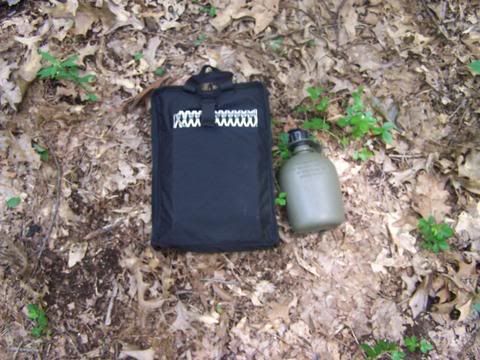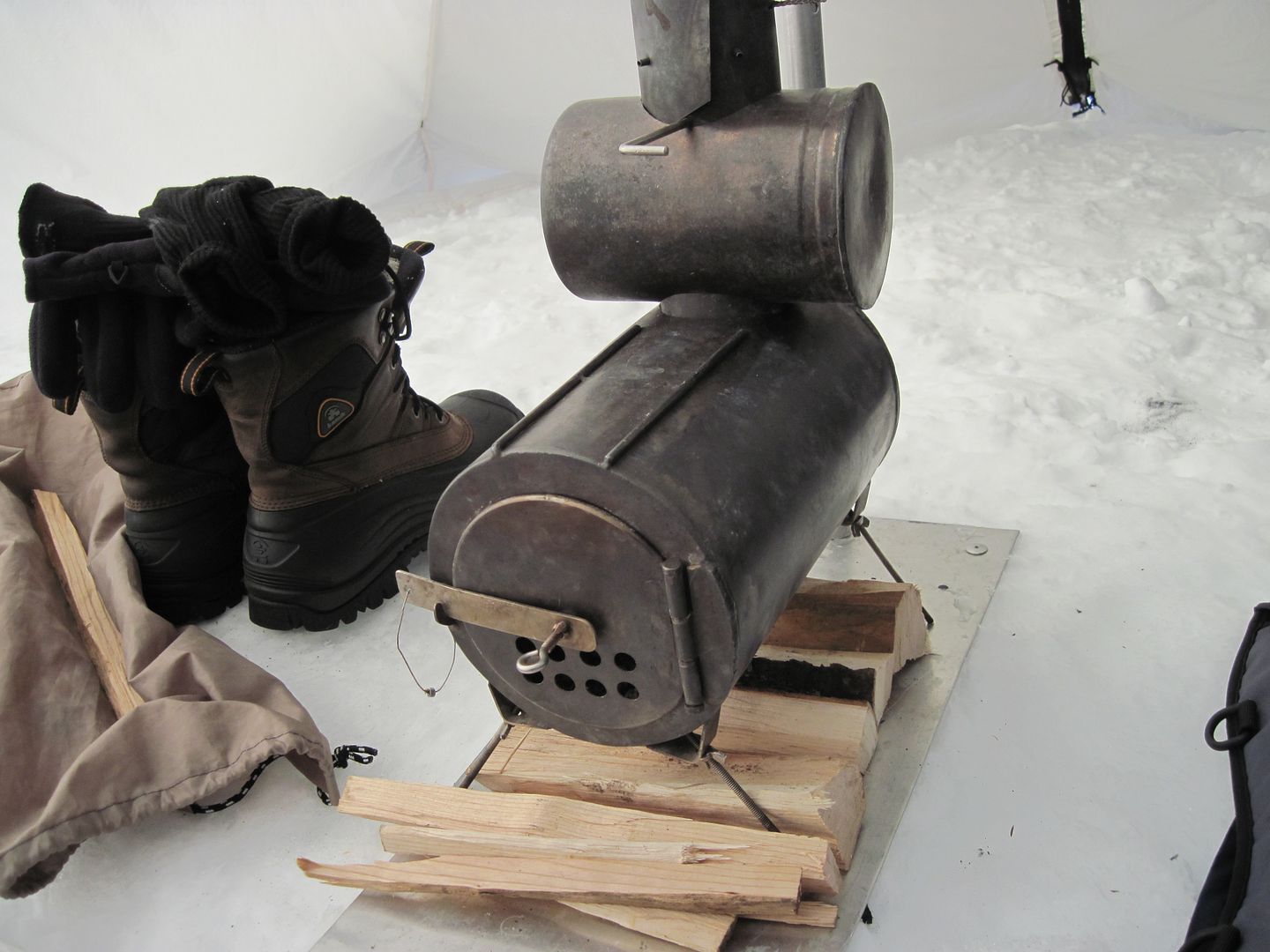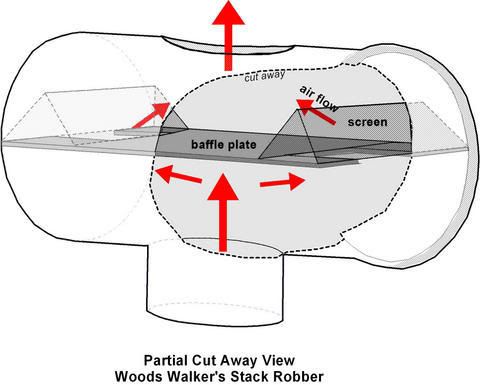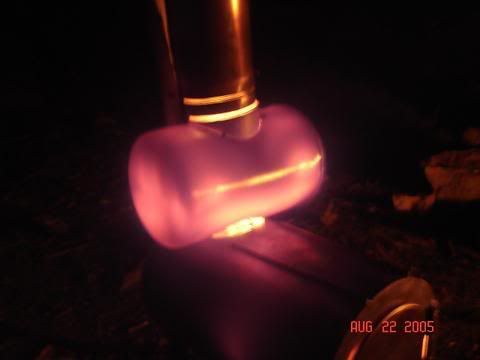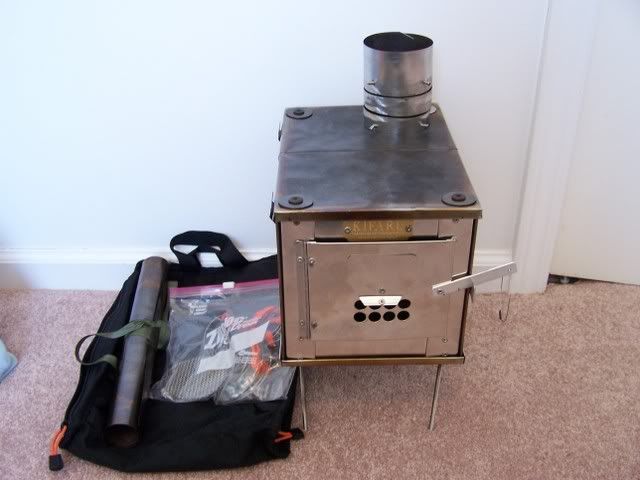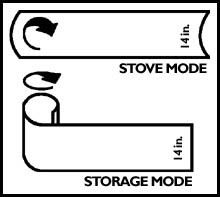Some of the hardest weather to deal with IMHO is temps in the mid to upper 30's with snow, sleet and rain. Setting up a camp, processing wood then drying off in the mist of that can be a pain. So when the opportunity to practice these skills presented themselves I headed out. The snow stopped, changing to sleet then rain then back to sleet again.
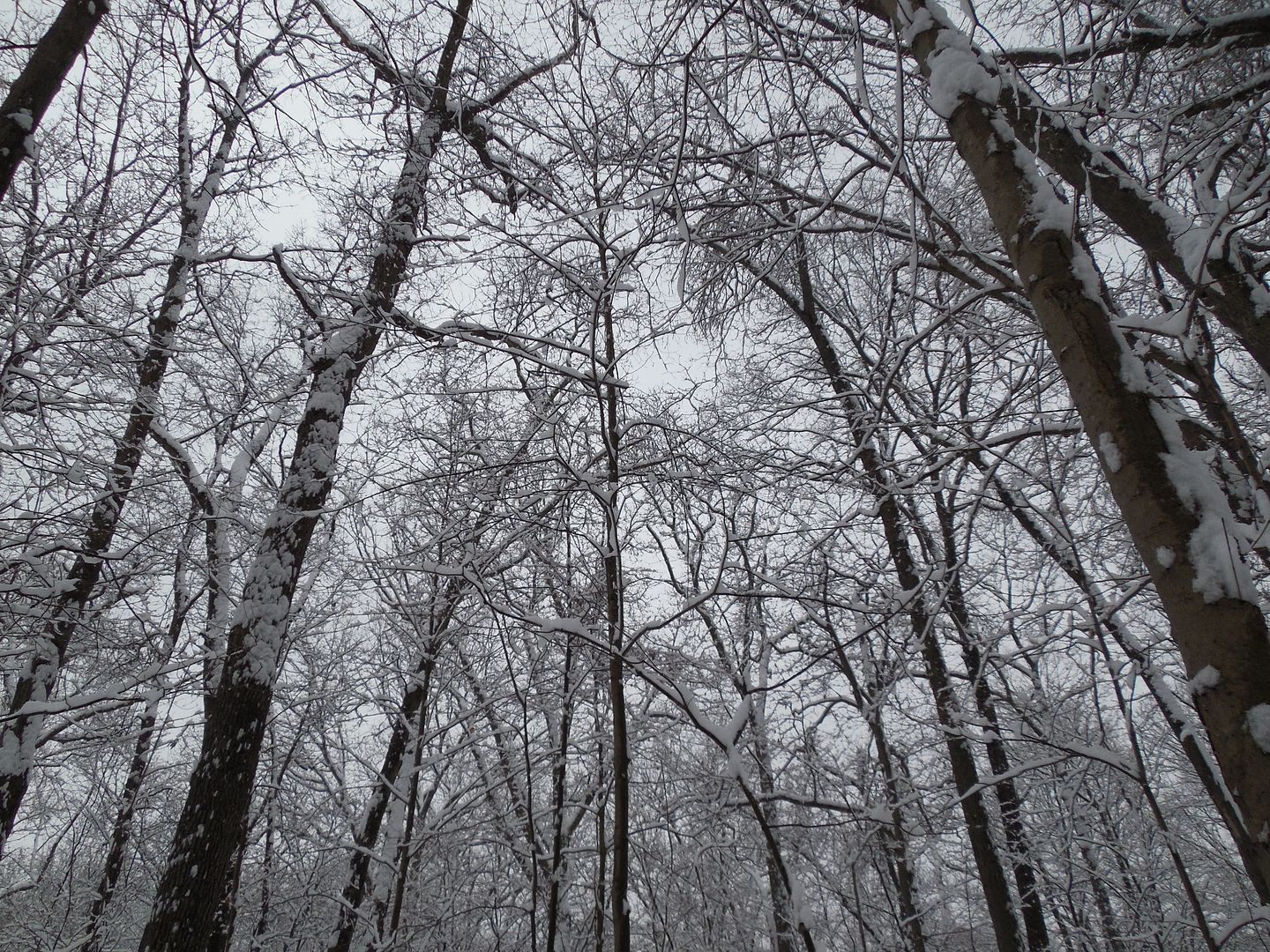
Once again the micro spikes carried me though. One of the best winter gear items I own. Almost super natural traction which actually takes a bit of getting used to. You'll swear you're going to slip and then it doesn't happen.

Bushwhacking sometimes means crawling under stuff. I like to clear the slush and snow off such obstacles. Snow sliding down one's neck just adds to the overall moisture content of clothing. Getting wet is my enemy during cold weather. Everything is ok when moving (up to a point) but then the world goes down hill fast once activity levels drop.
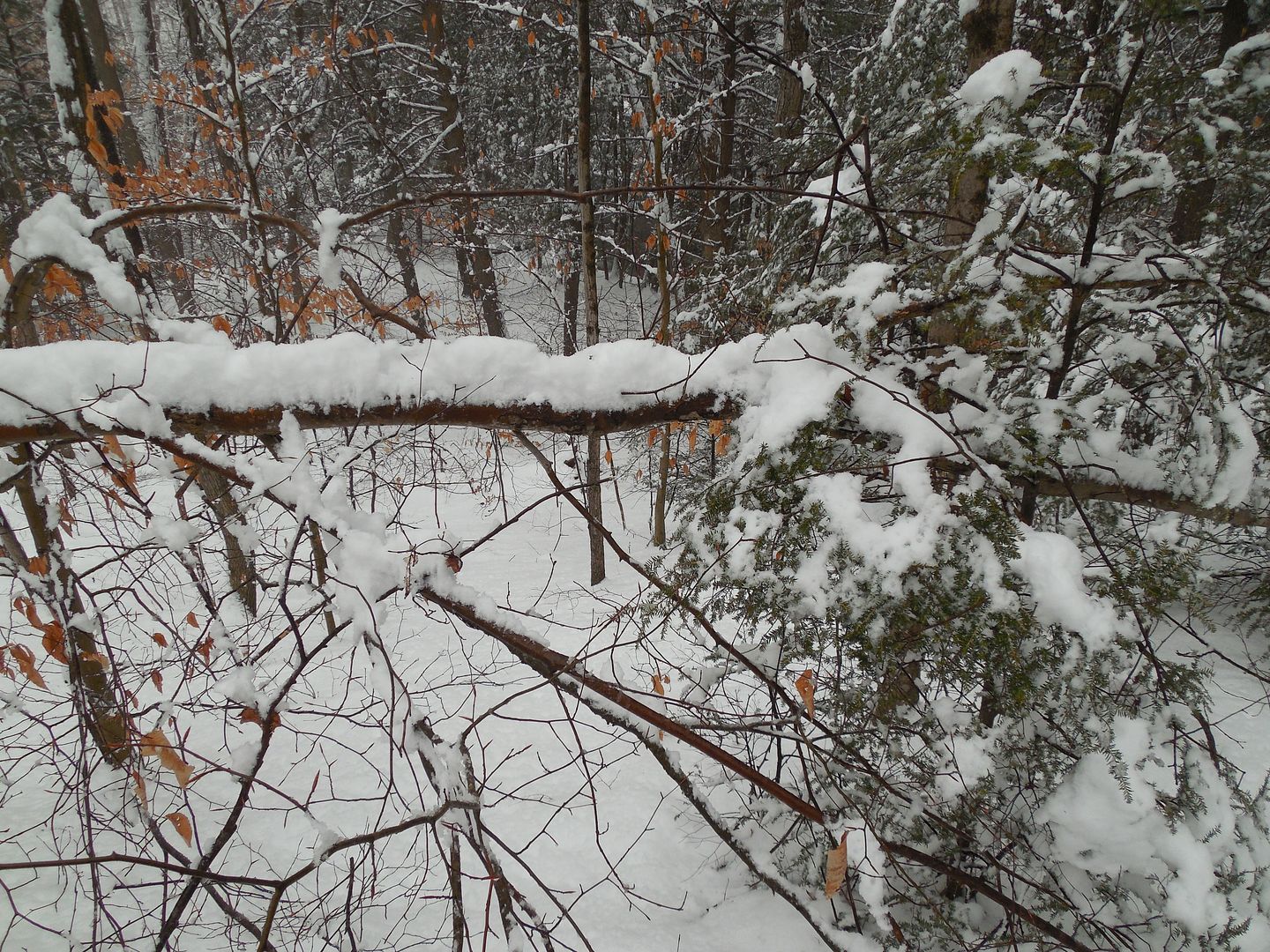
Normally if using a heated shelter my priorities are wood and water as it's harder to deal with both issues in the dark but here I really wanted to pitch the canopy first.
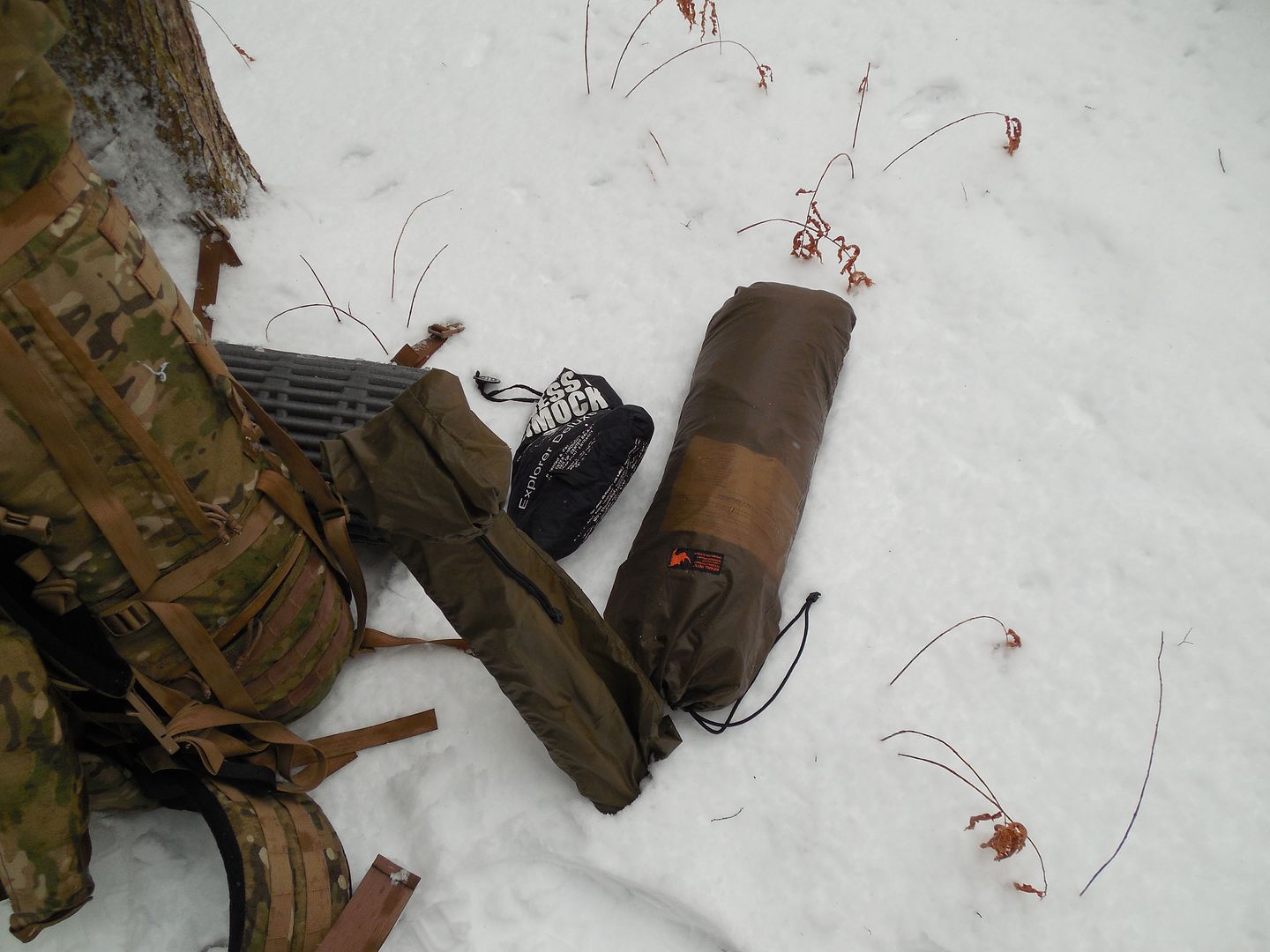

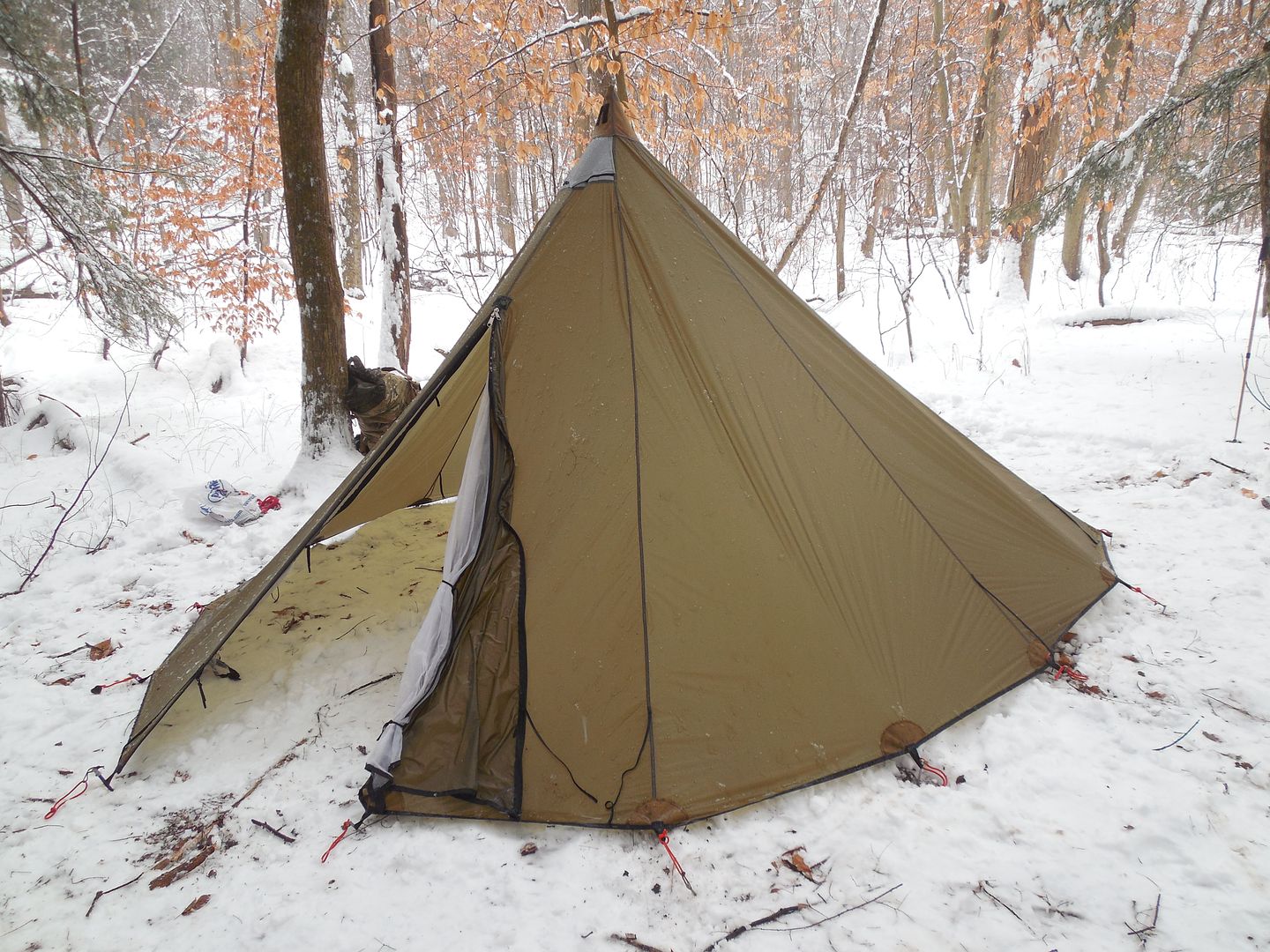
The goal was to stay dry but it wasn't long before that hope faded. My hands were really starting to feeling it. Kinda amazing how the wet and cold can suck the life right out of a person. Subzero F without wind is an easier game IMHO.
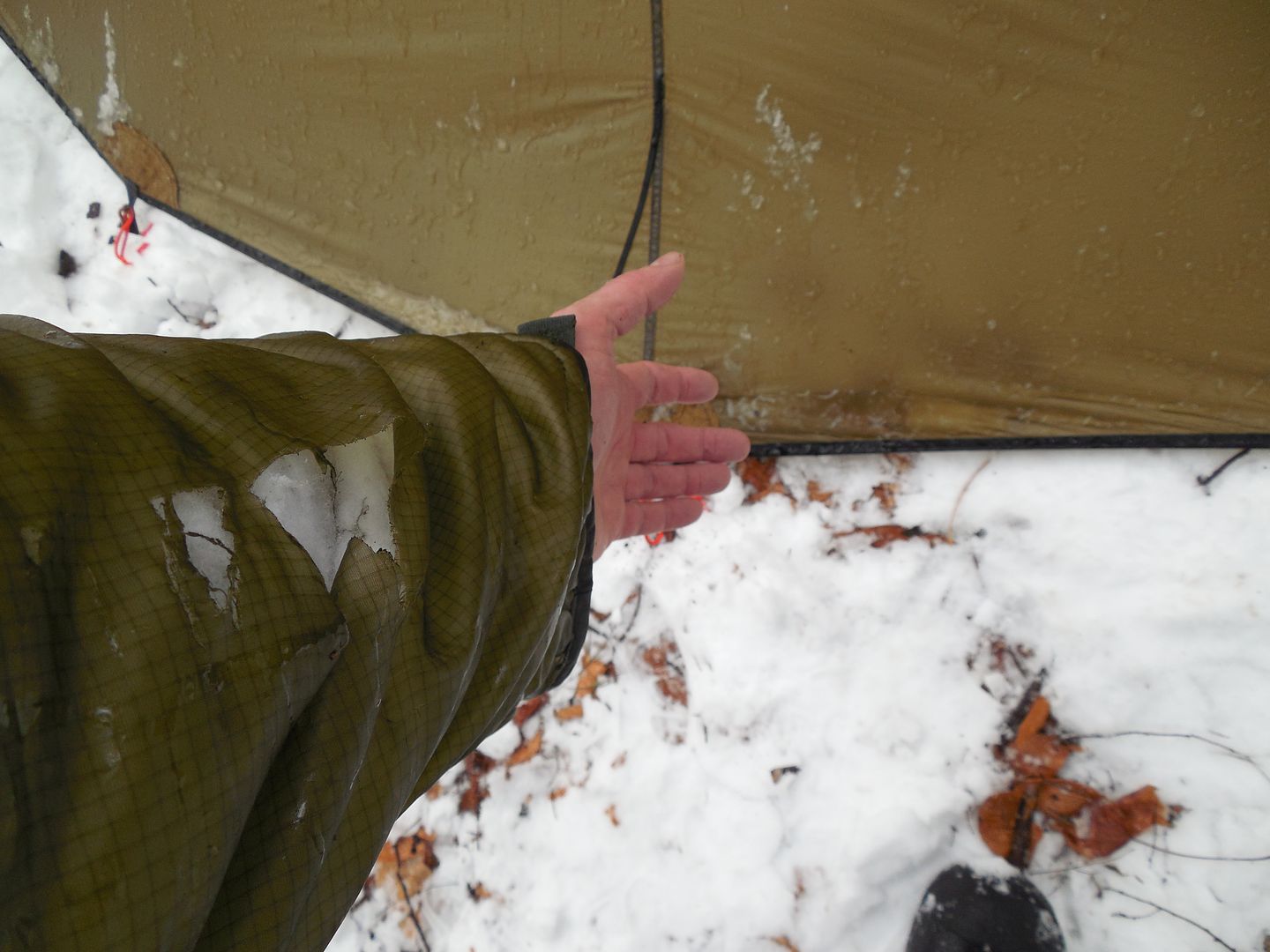
Took my gear out of the pack deciding on what to do next.
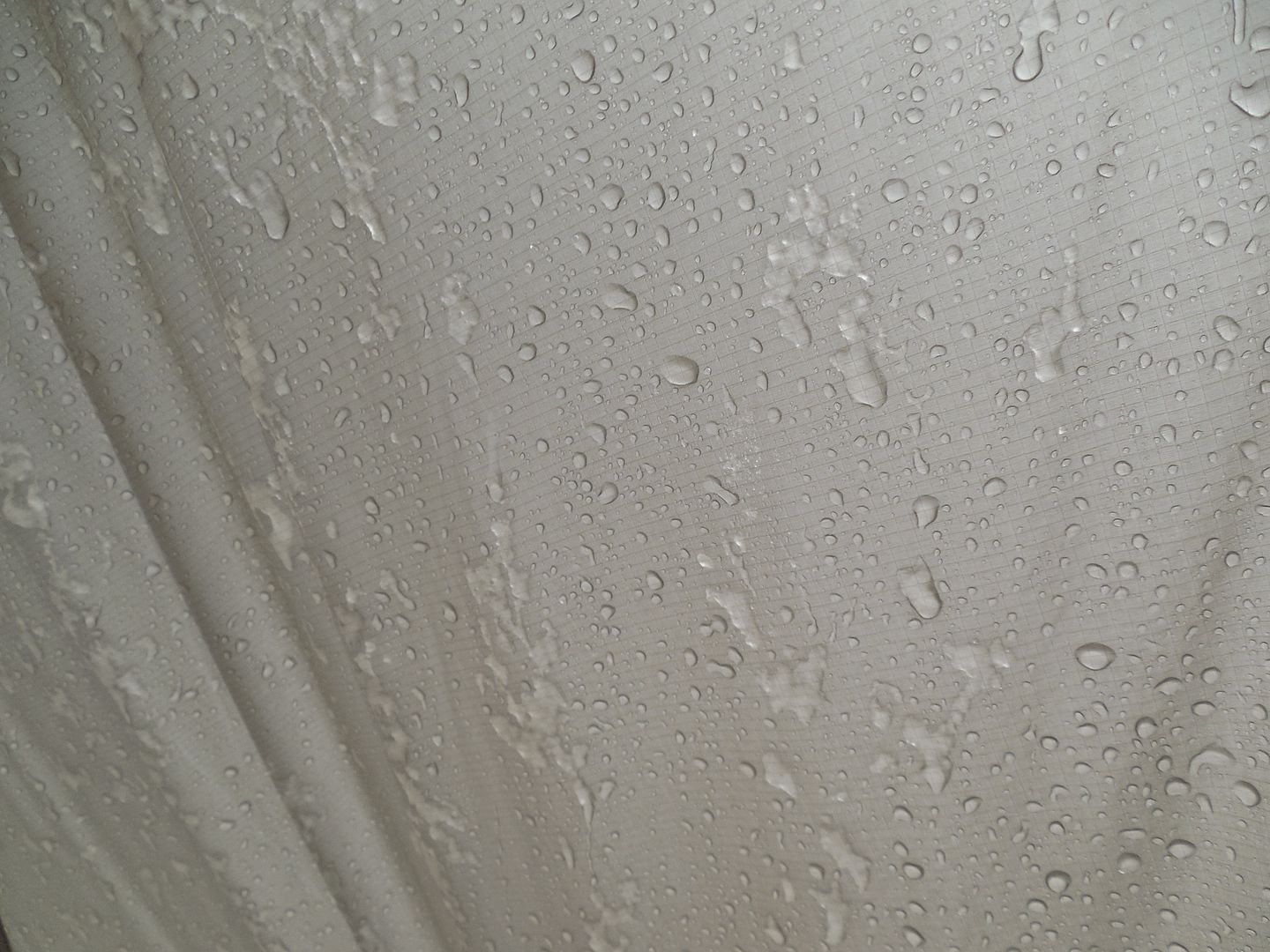
A fire would really really be nice but finding dry wood in slush is never easy. Well it's never easy for me anyways. My preference is standing deadwood without the bark. Having bark might make one think the underlying wood should be drier but in my AO most bark seems to trap more moisture than repel. I can't always find exactly what I am looking for but do my best.
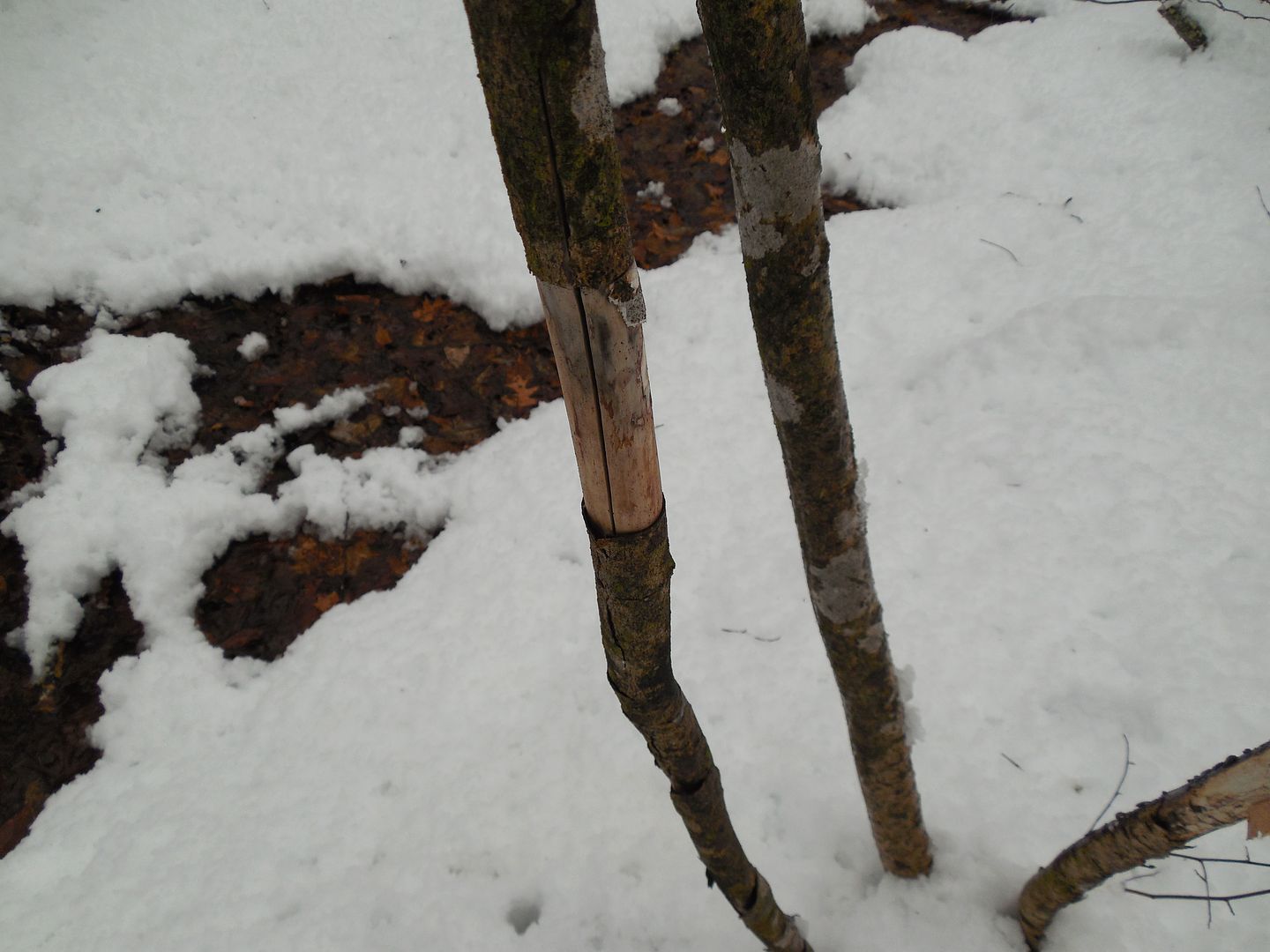
These conditions demand a split wood fire. All the twigs were a frozen slushy mess. The bark on the wood was soaked. I couldn't find enough really good wood. A twig fire might work but if it doesn't I would need to crawl into my bag defeated then hike out with wet cloths. Man would that suck. The plan was to split the wood into progressively smaller pieces. The finer shavings would work in place of pencil lead thick twigs to catch the flame. The thicker would expand that fire and thicker still hold it. Lots of people use this method as it's proven successful in harsh conditions. The down sides are time and effort.
Slushy wood inside my tent. Working in the tent was nice to keep the split wood, myself and gear from getting wetter during the processing but the limitation of space hampers everything.
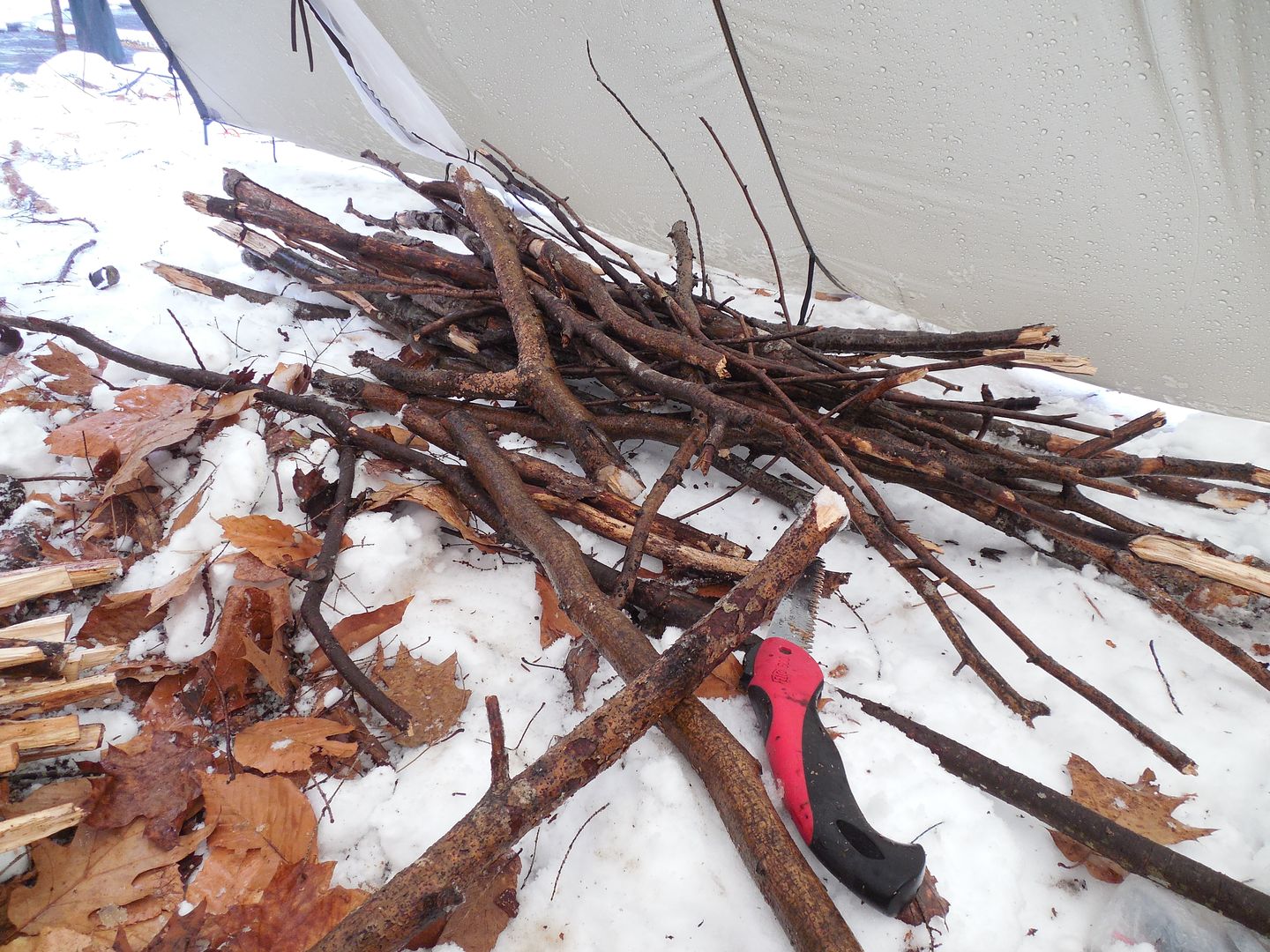
Off to a good start. Will make the smallest splittings and shavings just before the. Less chance of me dumping those into the snow.

Around dusk the moisture level seemed to jump up from 95% to 99.99% LOL. The cameras fogged over. Nearly done with the split wood. Once the stove has an established coal bed it will burn the regular damper wood. Still split wood always burns better. I kept the split wood and cuttings off the ground resting on longer sticks. It was nearly impossible to keep them totally off the ground during processing but I can only do so much.

Lastly the shavings.

Ready to GO!
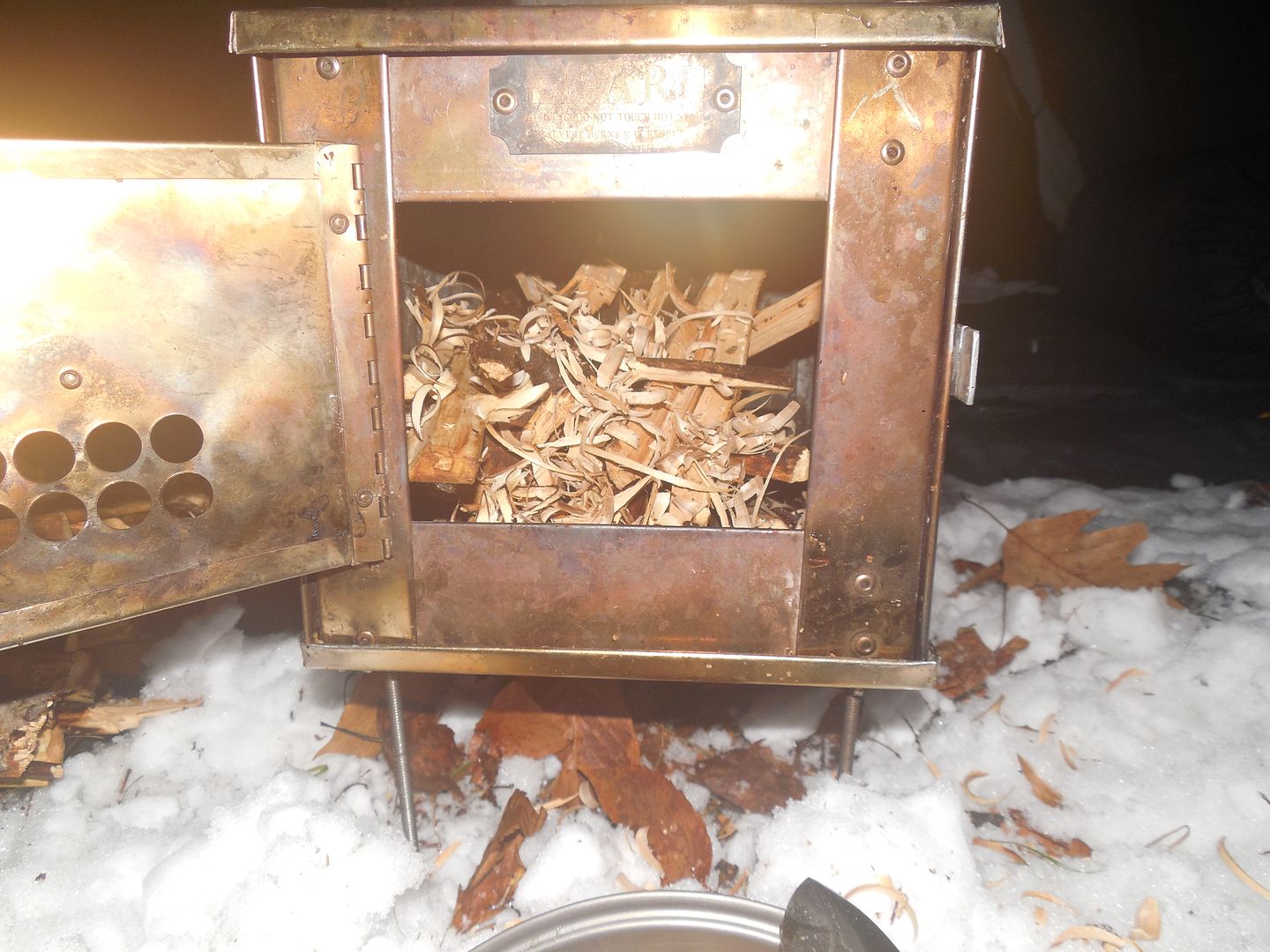
FIRE!
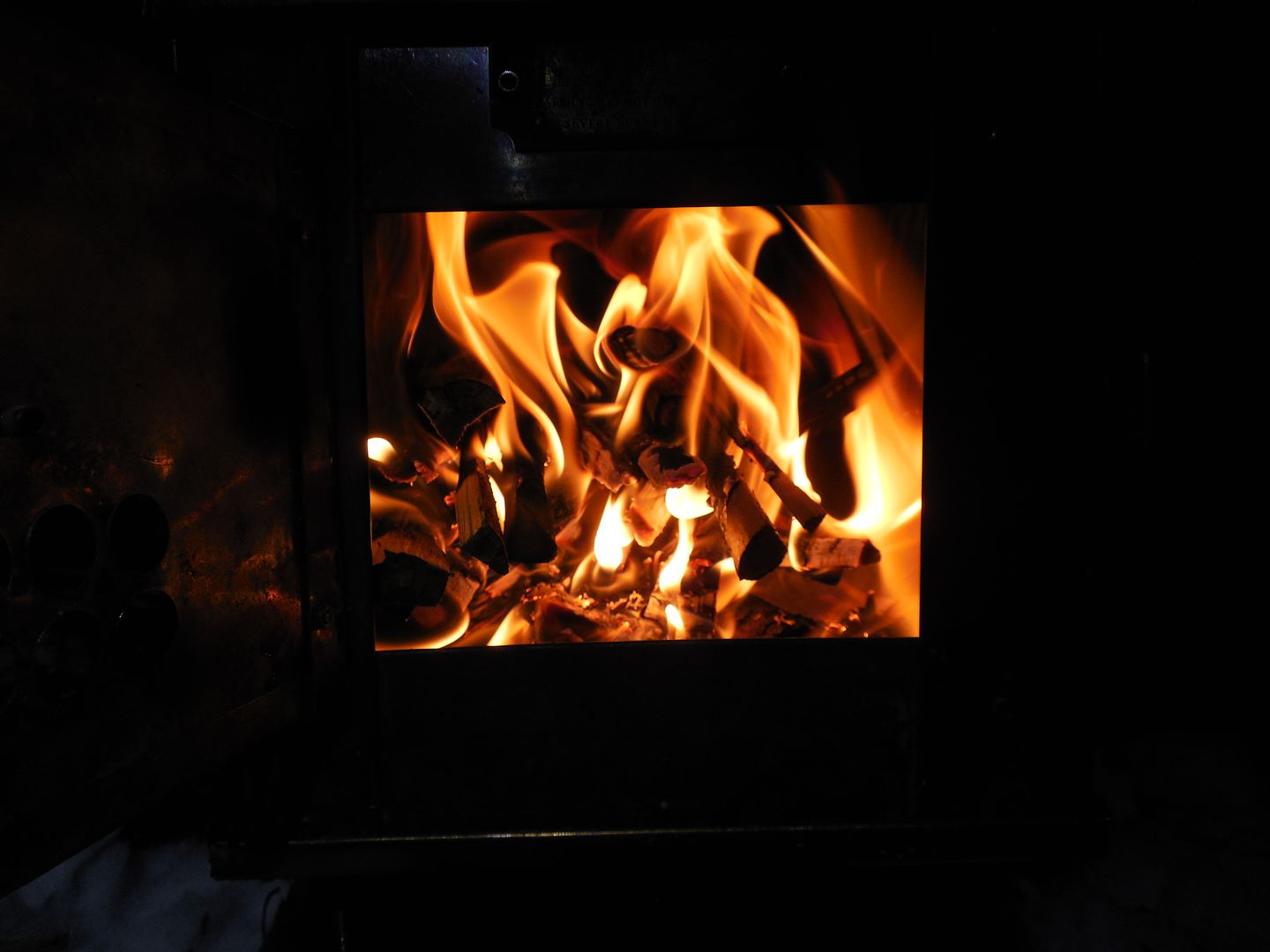
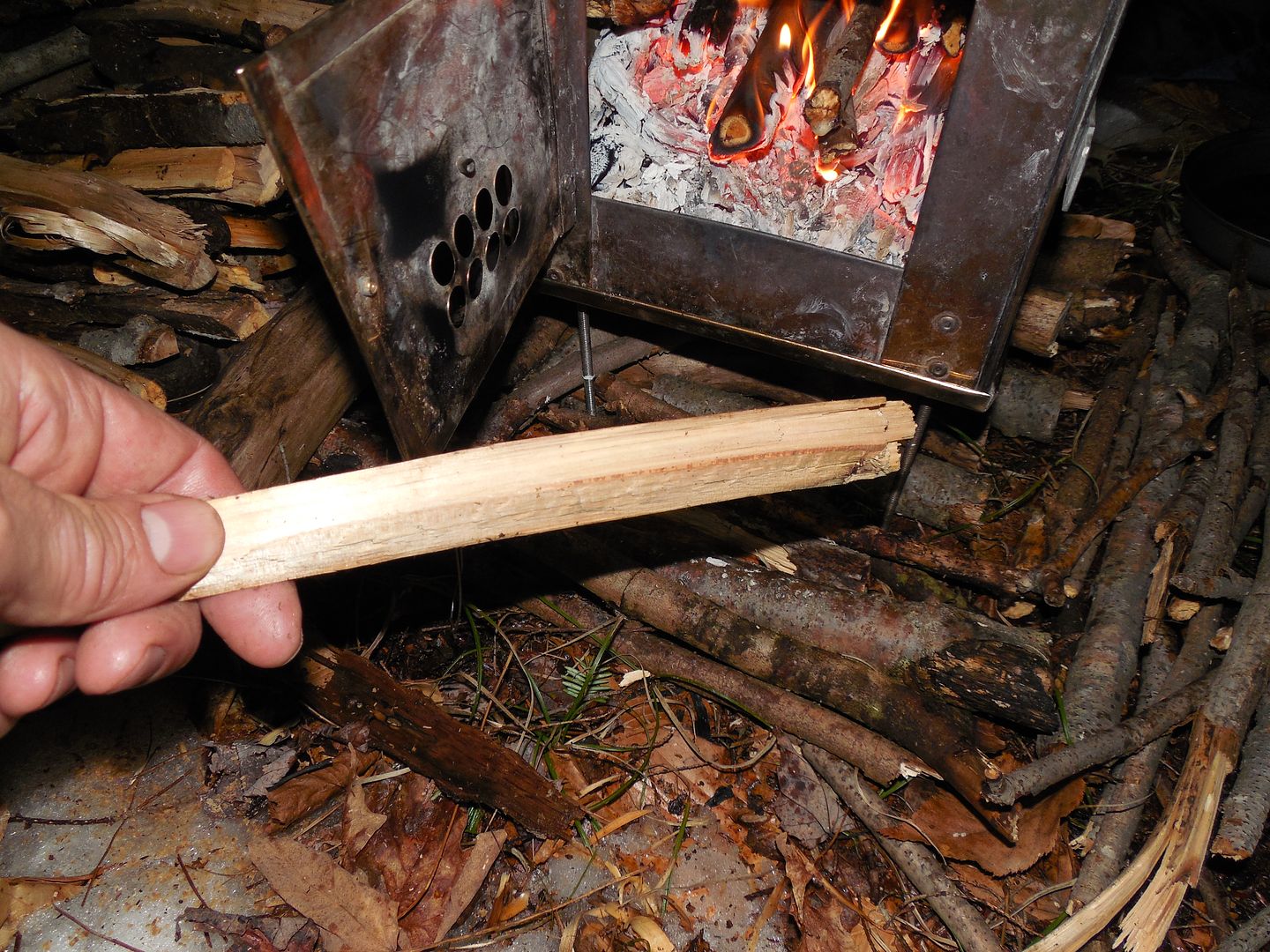
The heat took the edge right off.
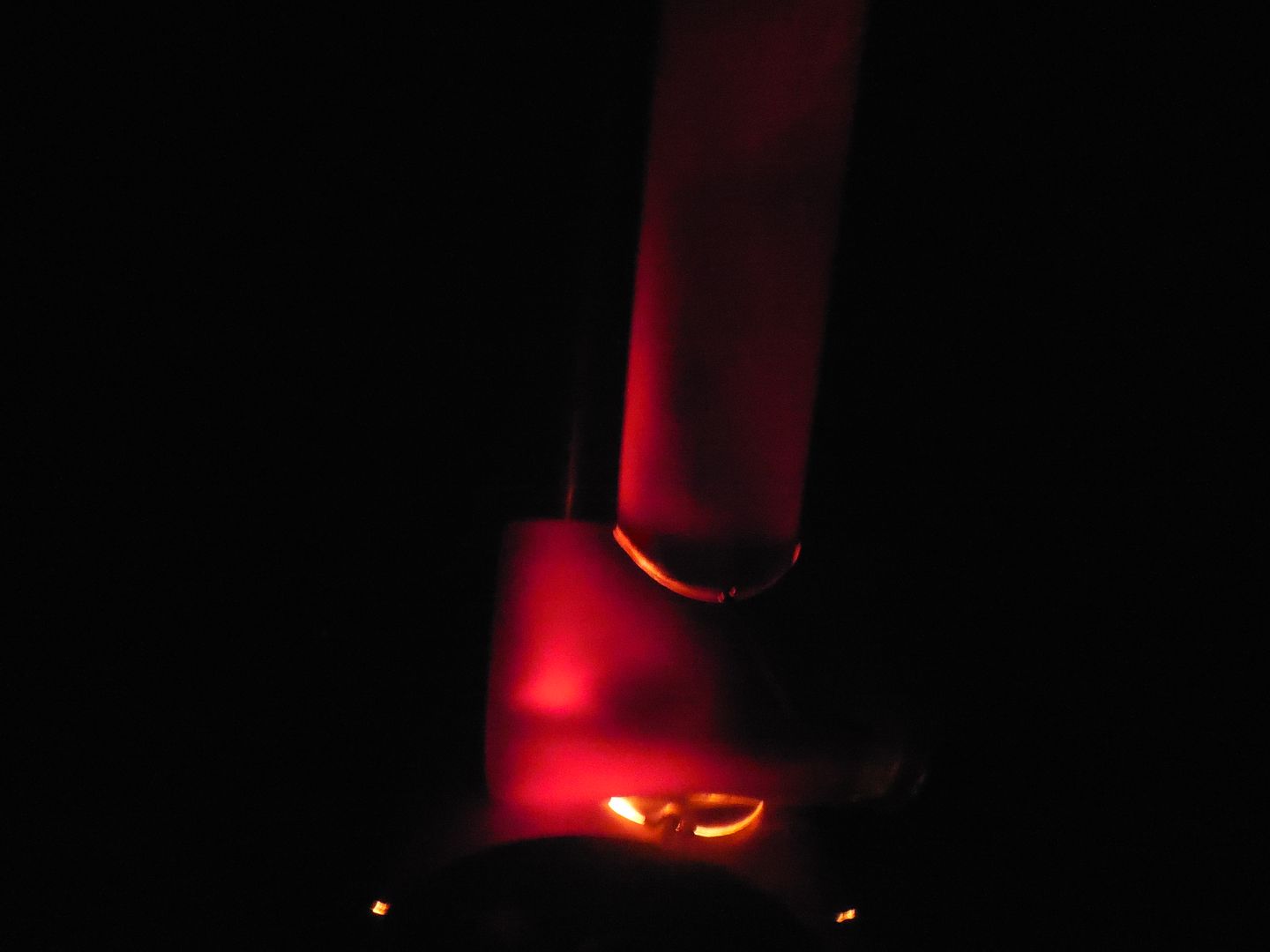
Doesn't look like much but this split wood combined with drying sticks burned all night with fuel leftover.
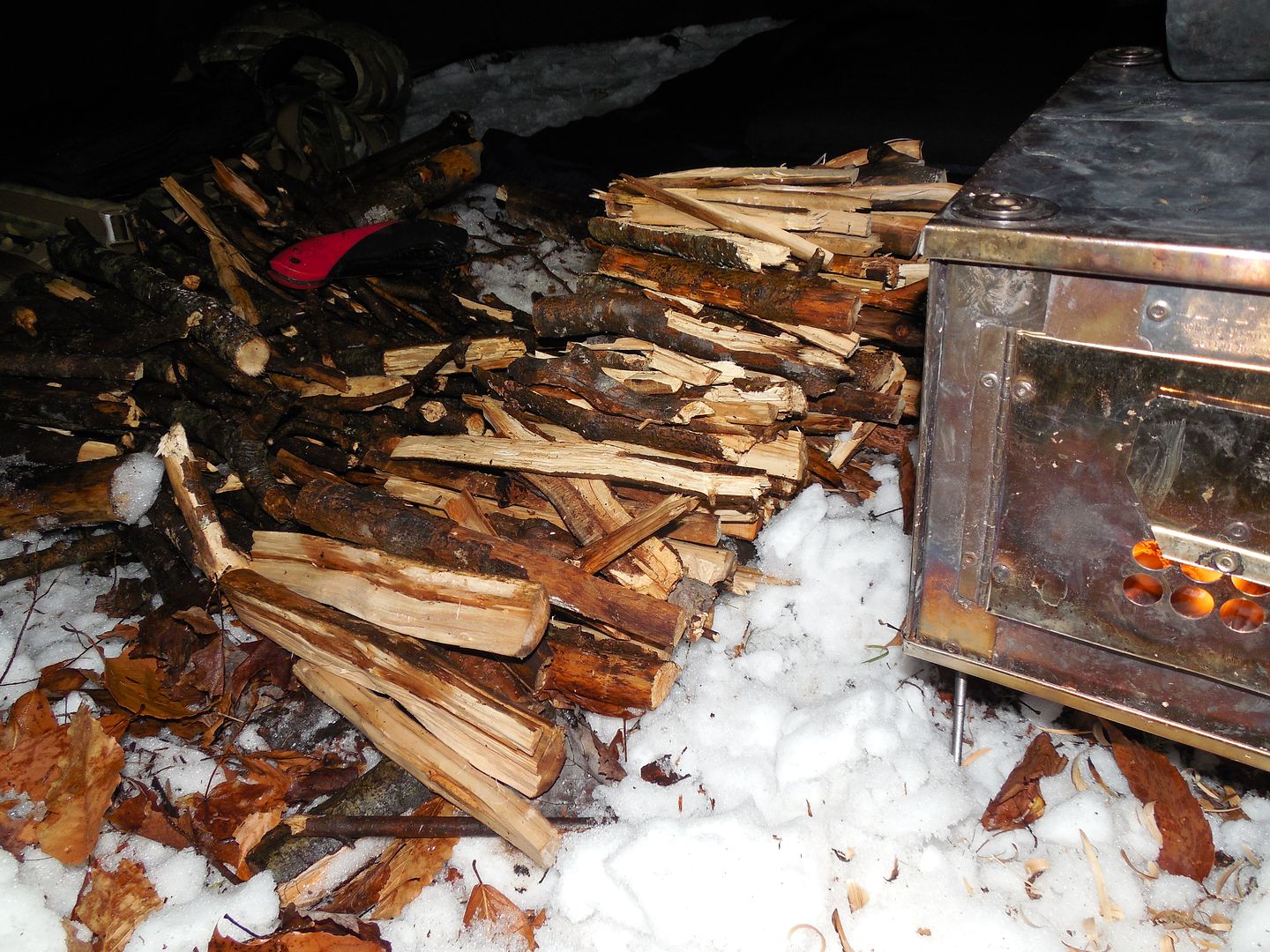
The sides, back and under the stove are great places to help dry firewood. I tend to avoid drying wood near the front.
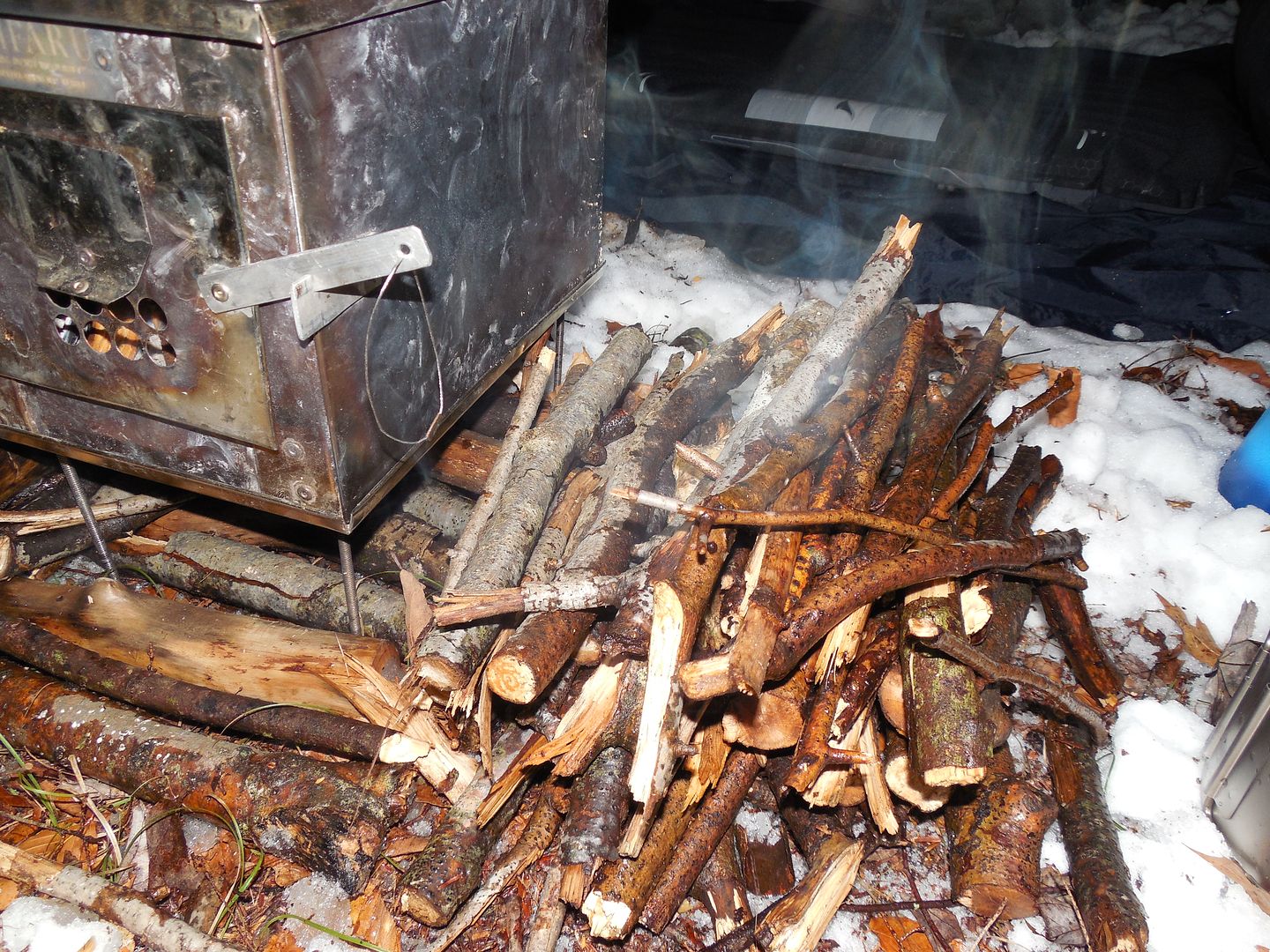
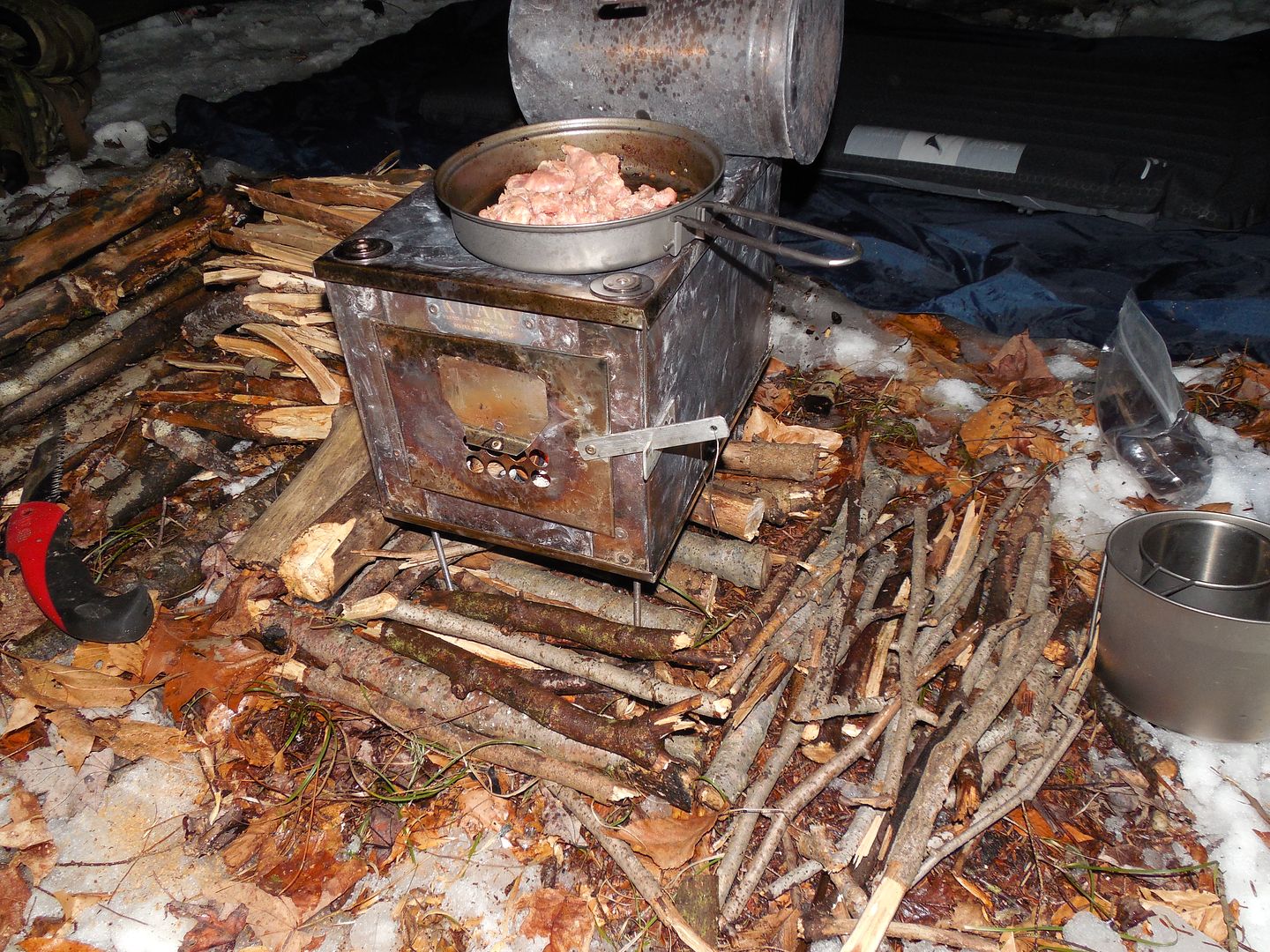
Sausage and cauliflower.
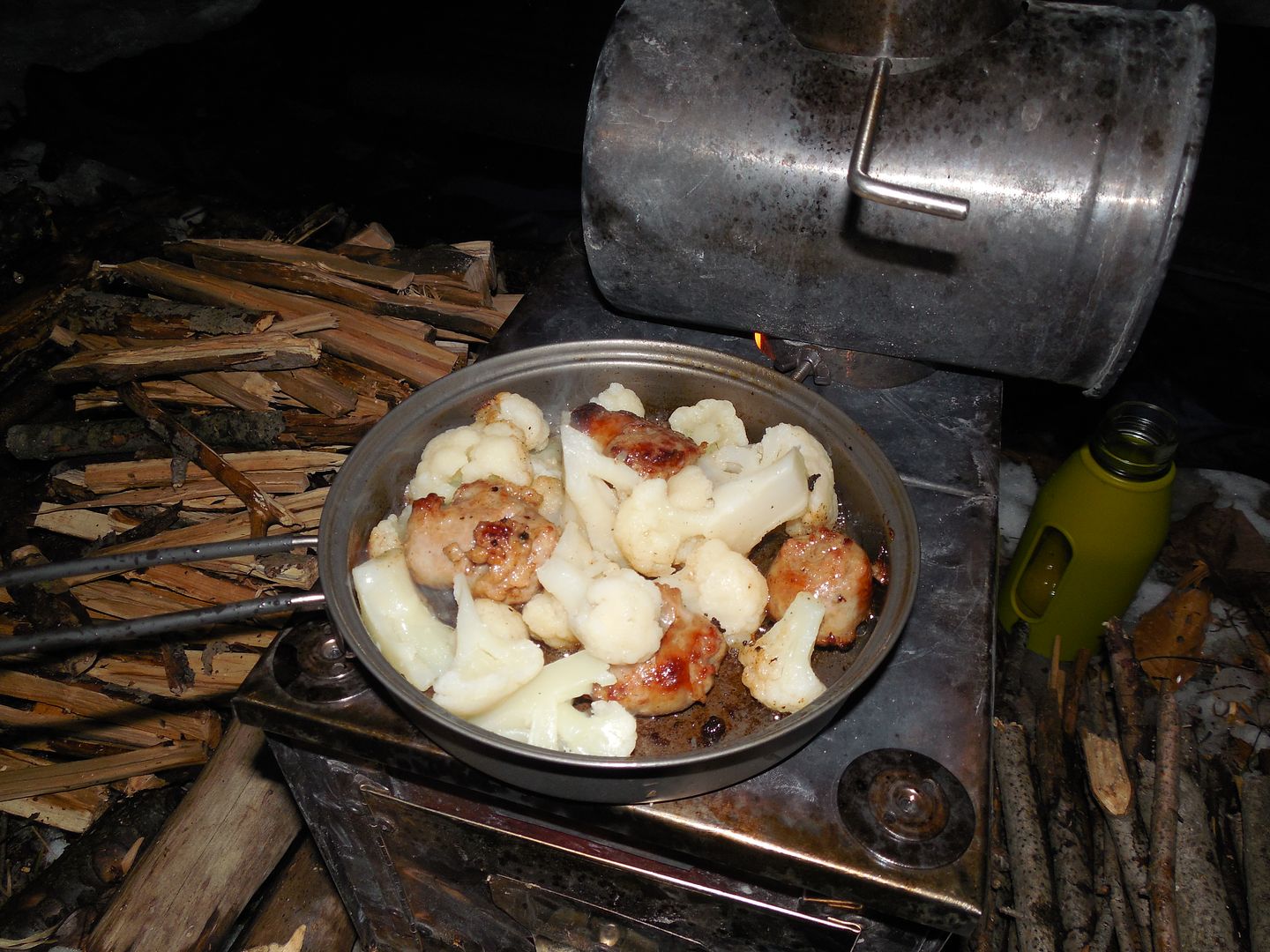
Sausage bacon. What? You heard that right!

One of the cool or rather hot things about a heated shelter is the way the moisture raises off clothing and wood once the stove is running.

Things are going well.
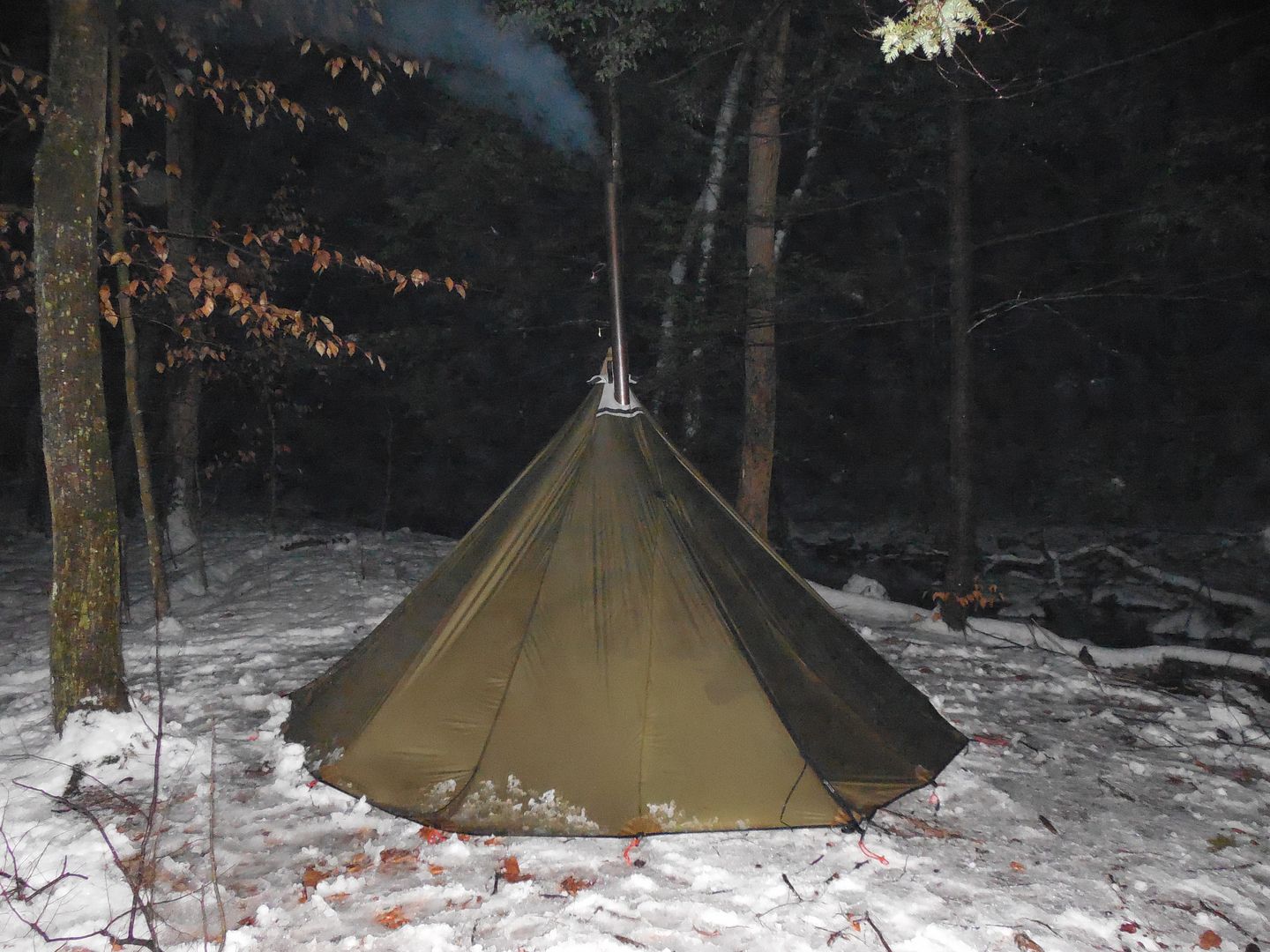
Mistakenly took my 6-man two-piece pipe setup. Too long for the 4-man tent but worked great.
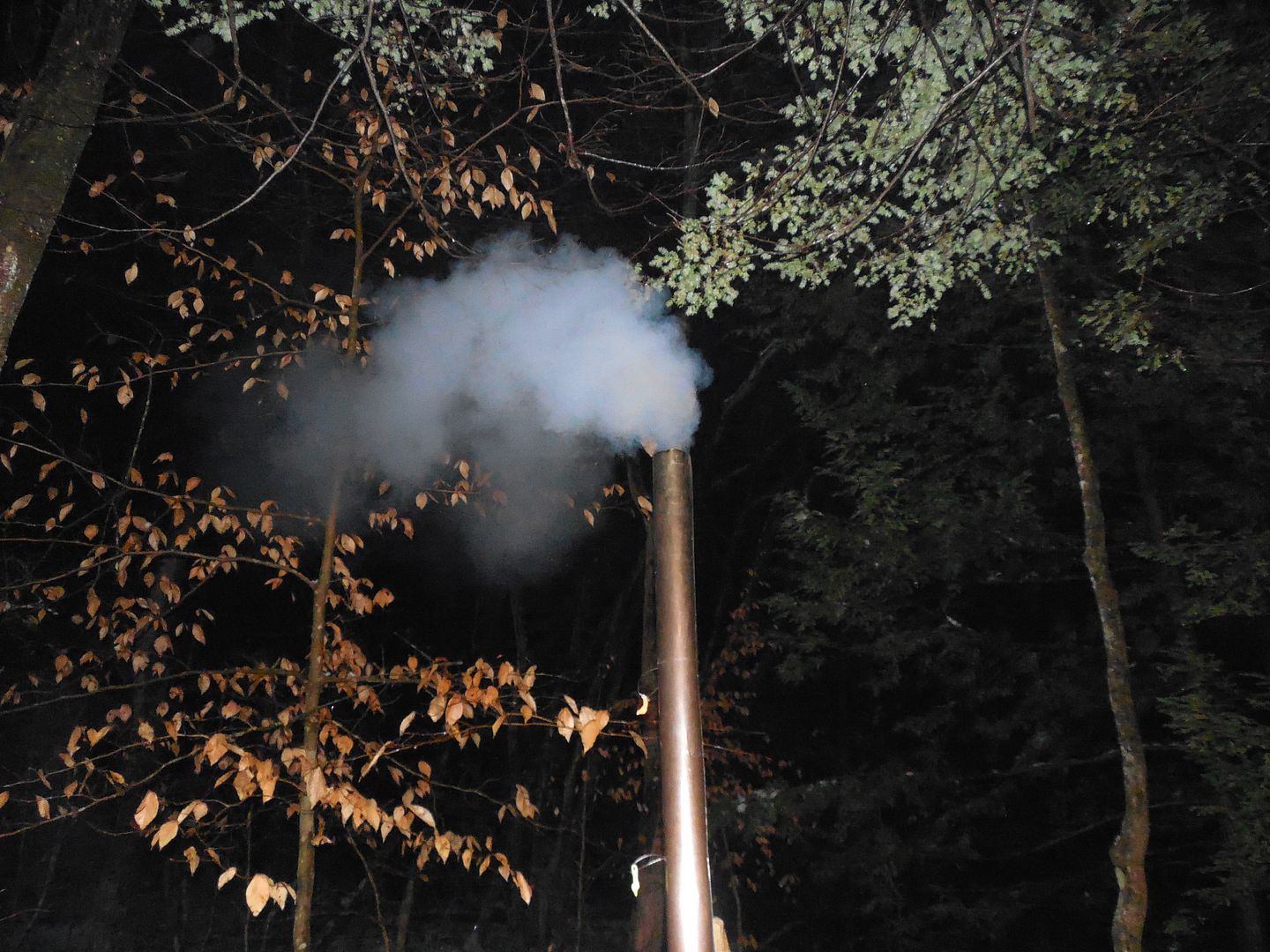
I was warm and dry but importantly so were my clothes which were hanging on the clothesline.
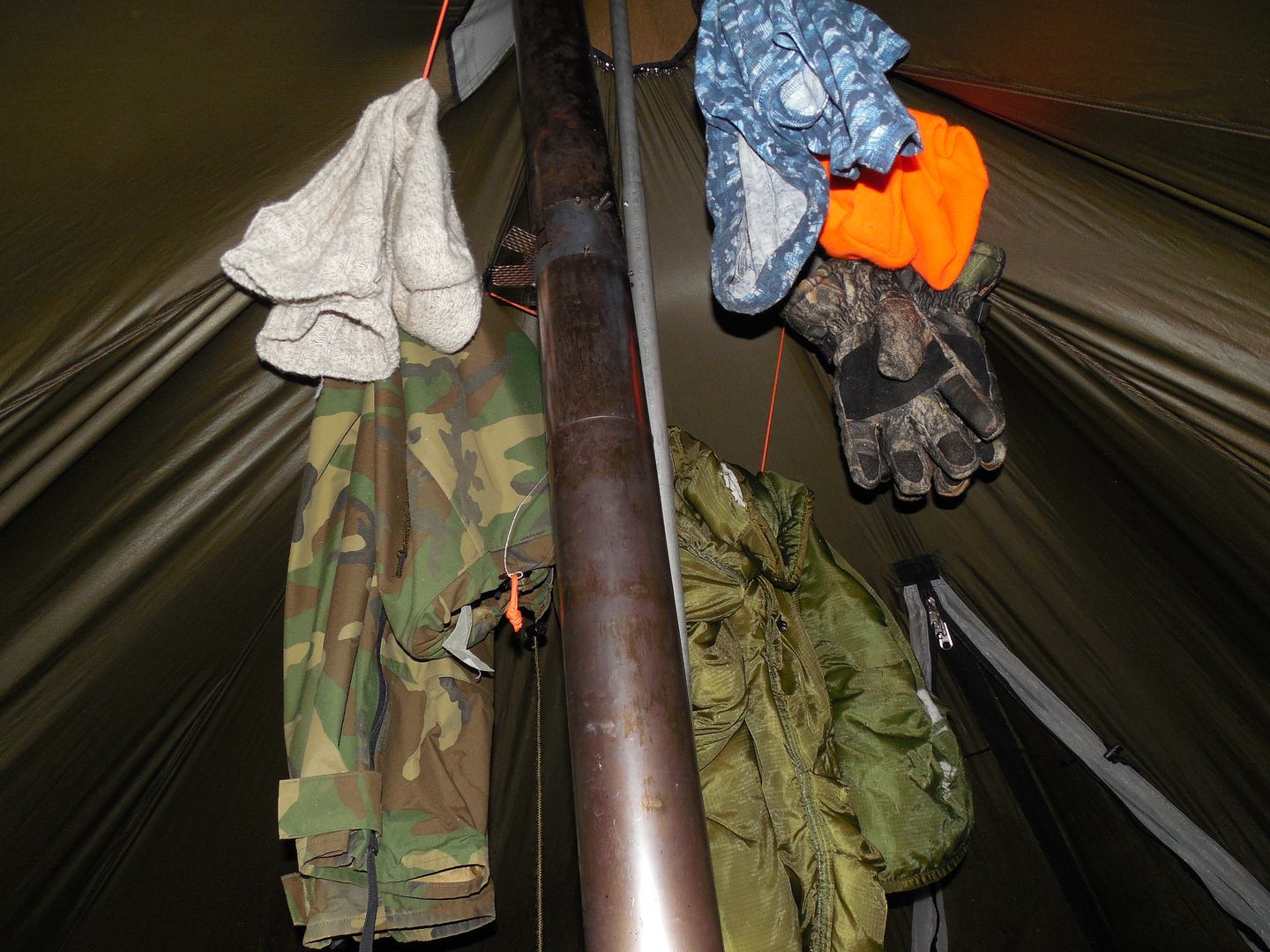
Time to get up. I have to get out to prep for the so callerd blizard of the century which never really came. Got only 10 inches of snow for that storm. Oh well.
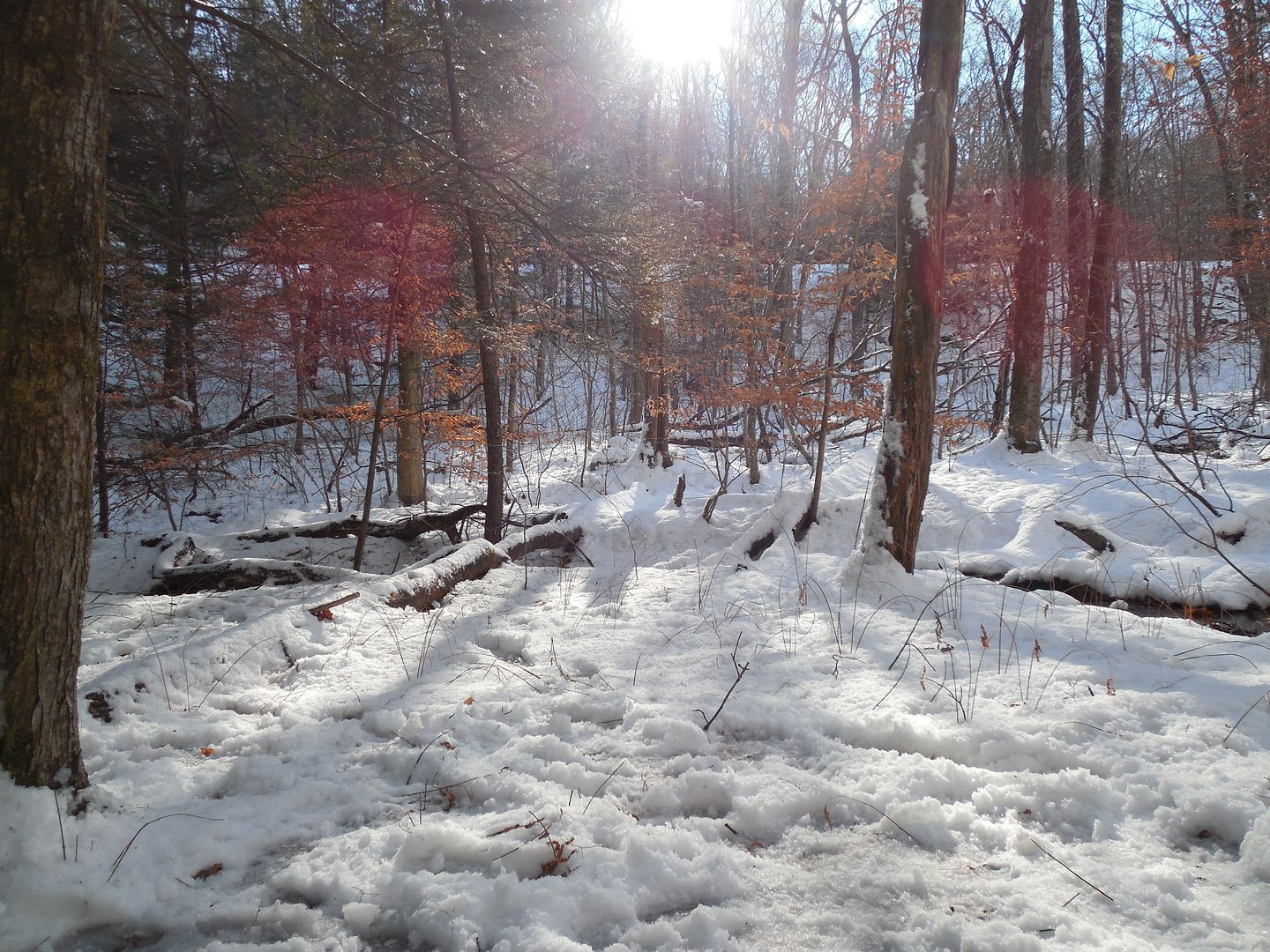
Morning tipi. Stove started to sink into the ground off to the side as the earth melted.
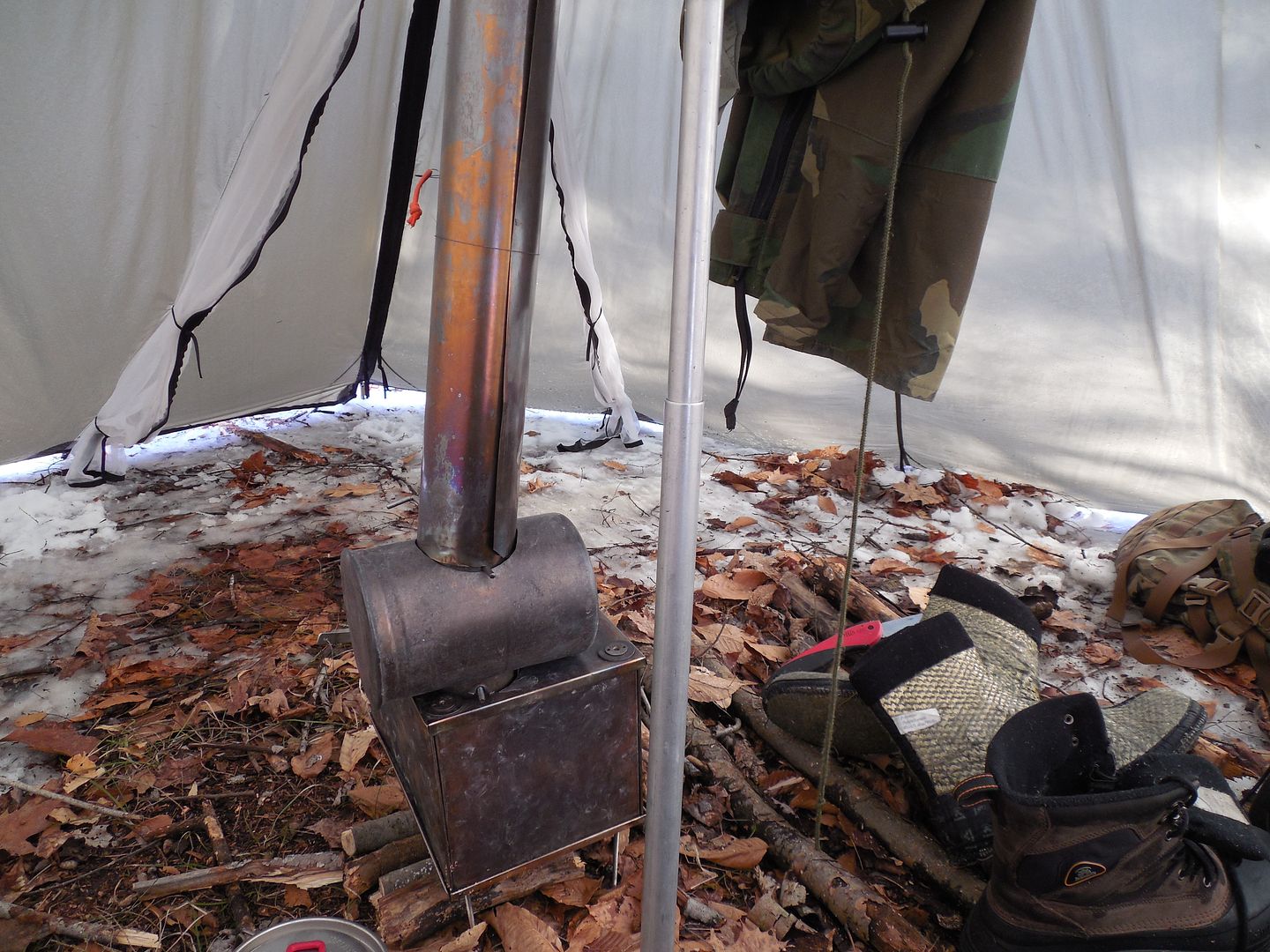
Primary downsides of the hot tent are setup and take down times. There is the stove to deal with.
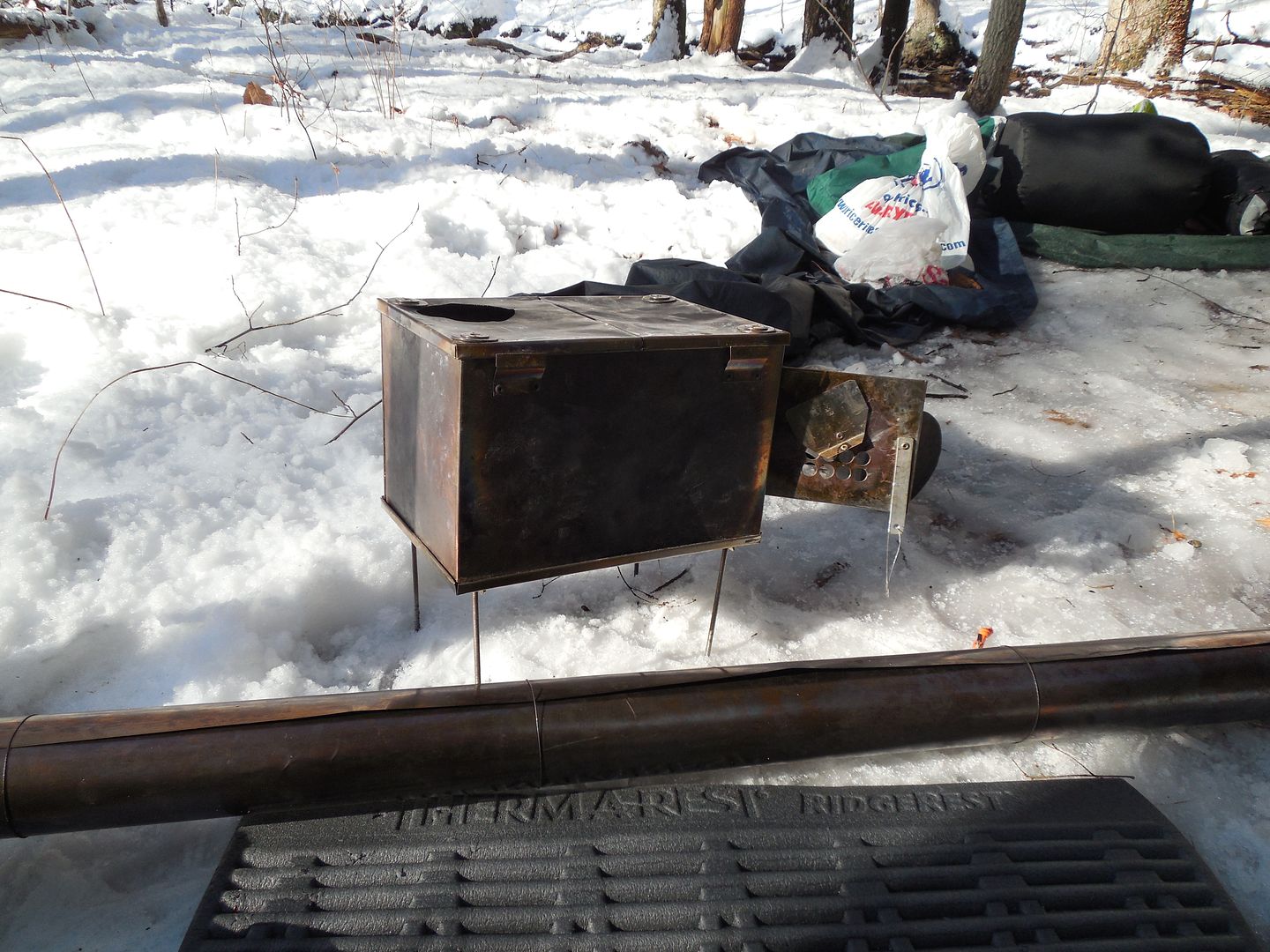
Then all those pegs.
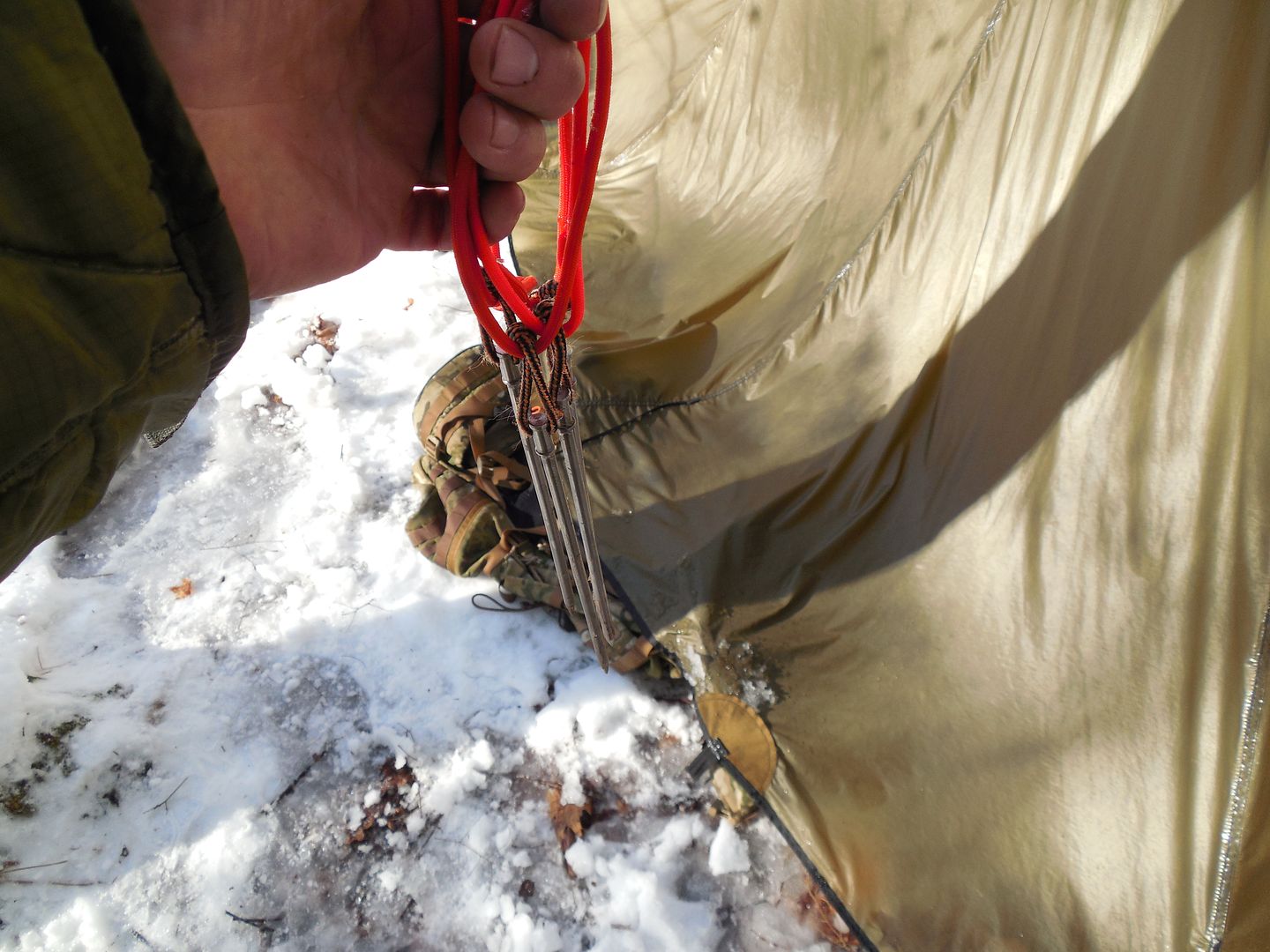
My kit.
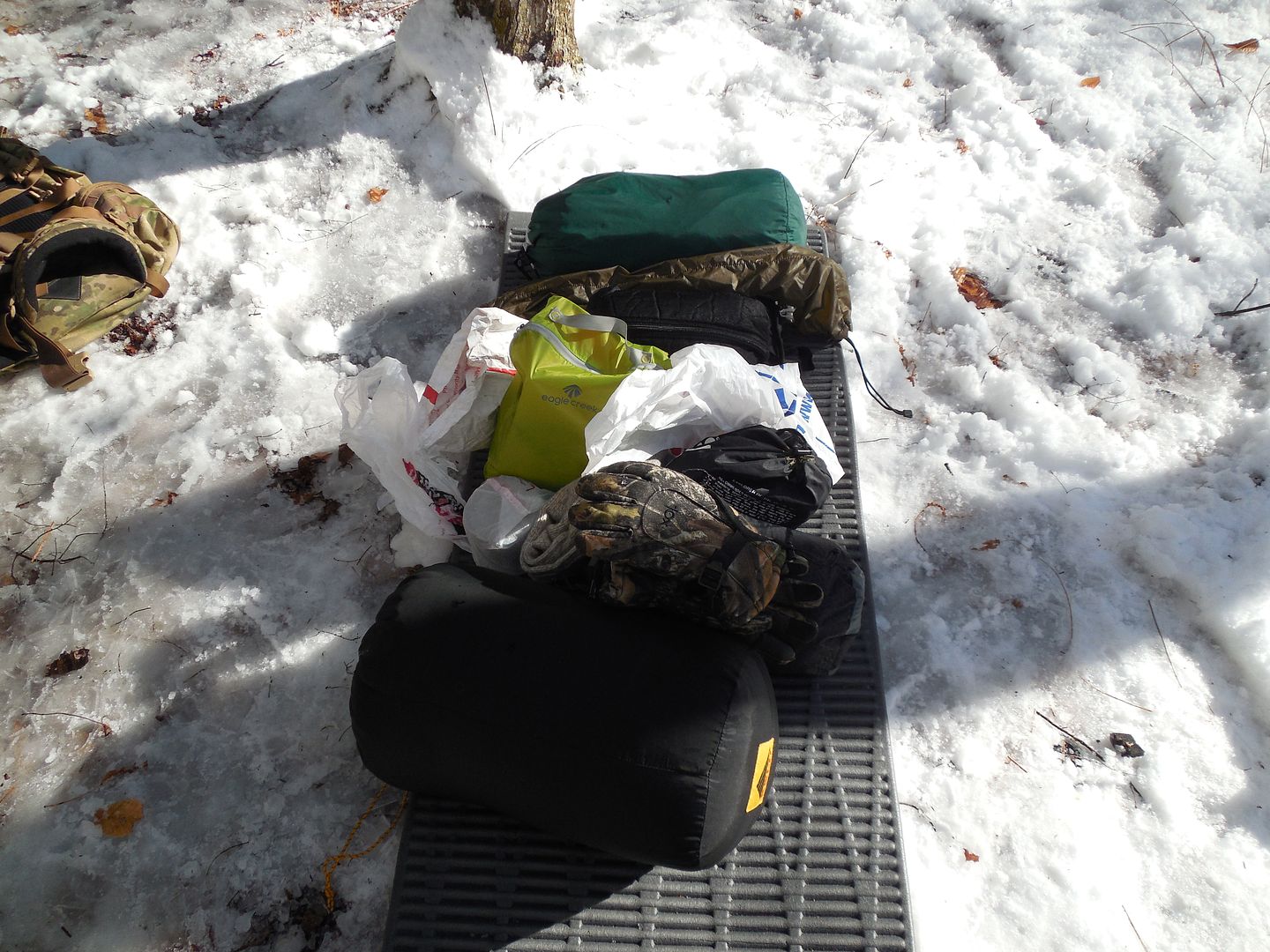
Stand out gear beyond the obvious heated tipi system:
1. Kahtoola microspikes. Maybe I am getting old but not falling really works for me.
2. Exped downmat 7XS and XL Ridgerest pads. Insulation from the ground and comfort makes all the difference.
3. Jeff White knife and felco folding saw. Tools for the split wood fire.
4. Nalgene Oasis canteen.
5. Fenix HL30 headlamp.
Always liked snow on river rocks.
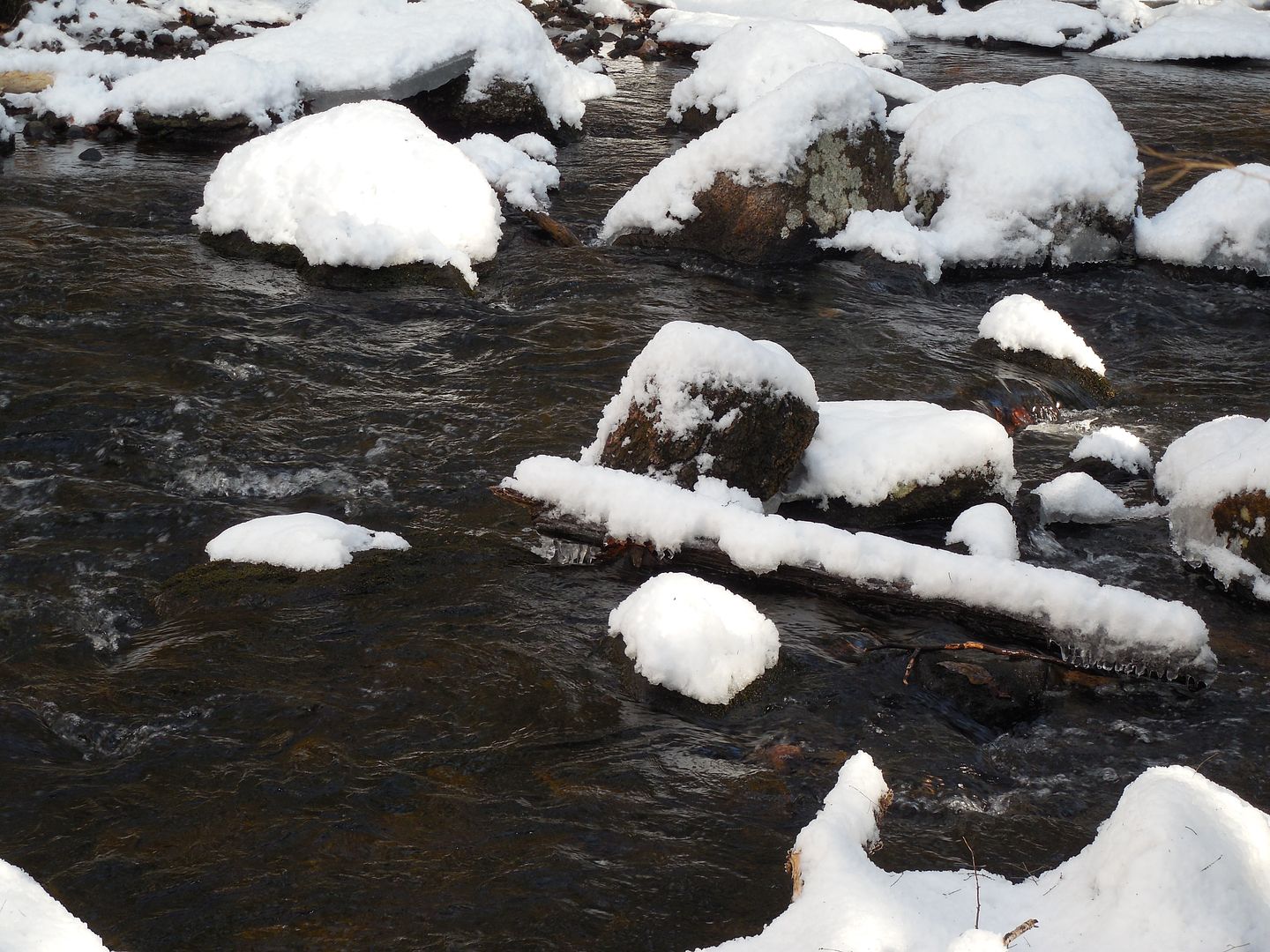
Taking a break under this big Hemlock.
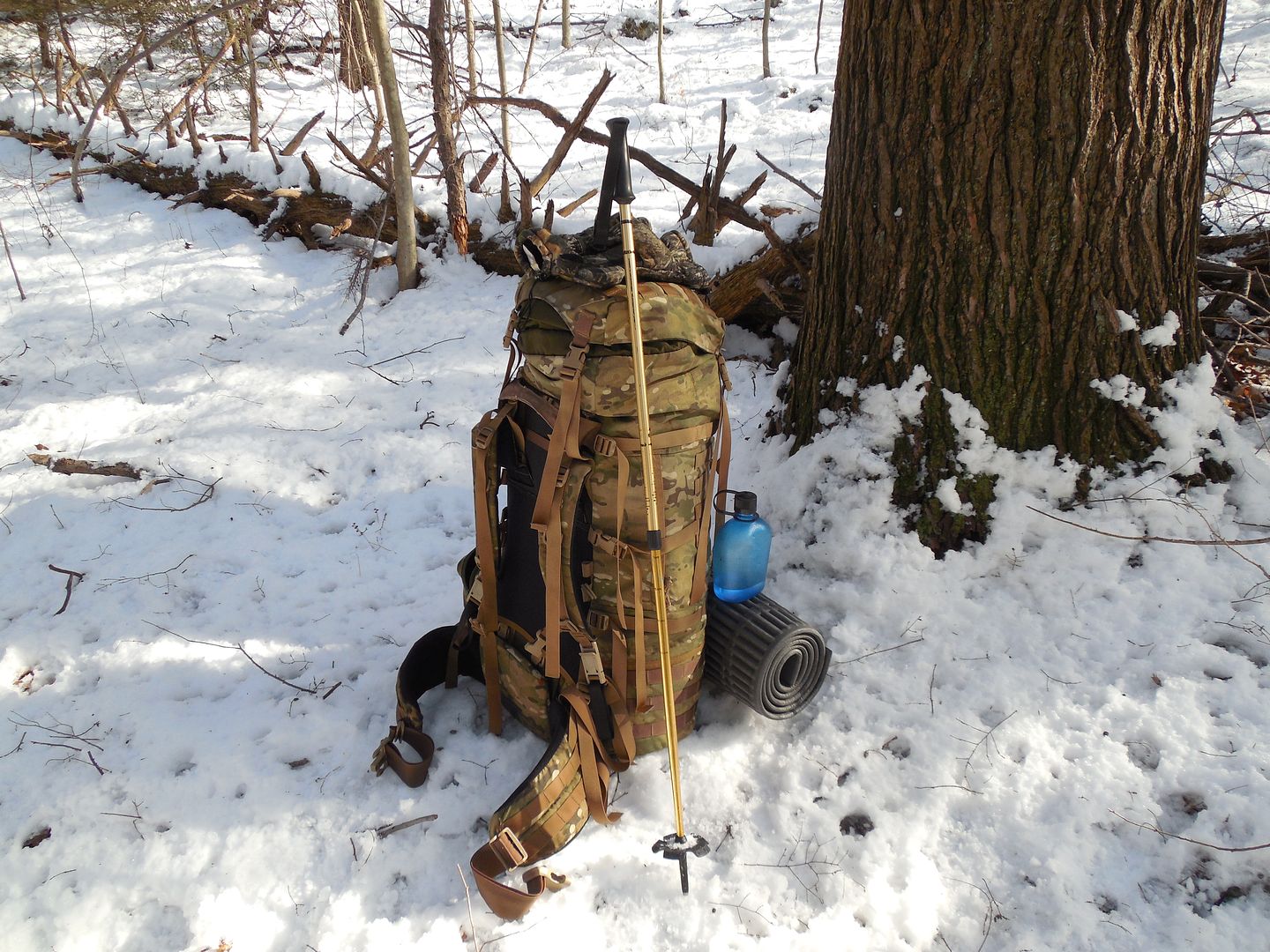
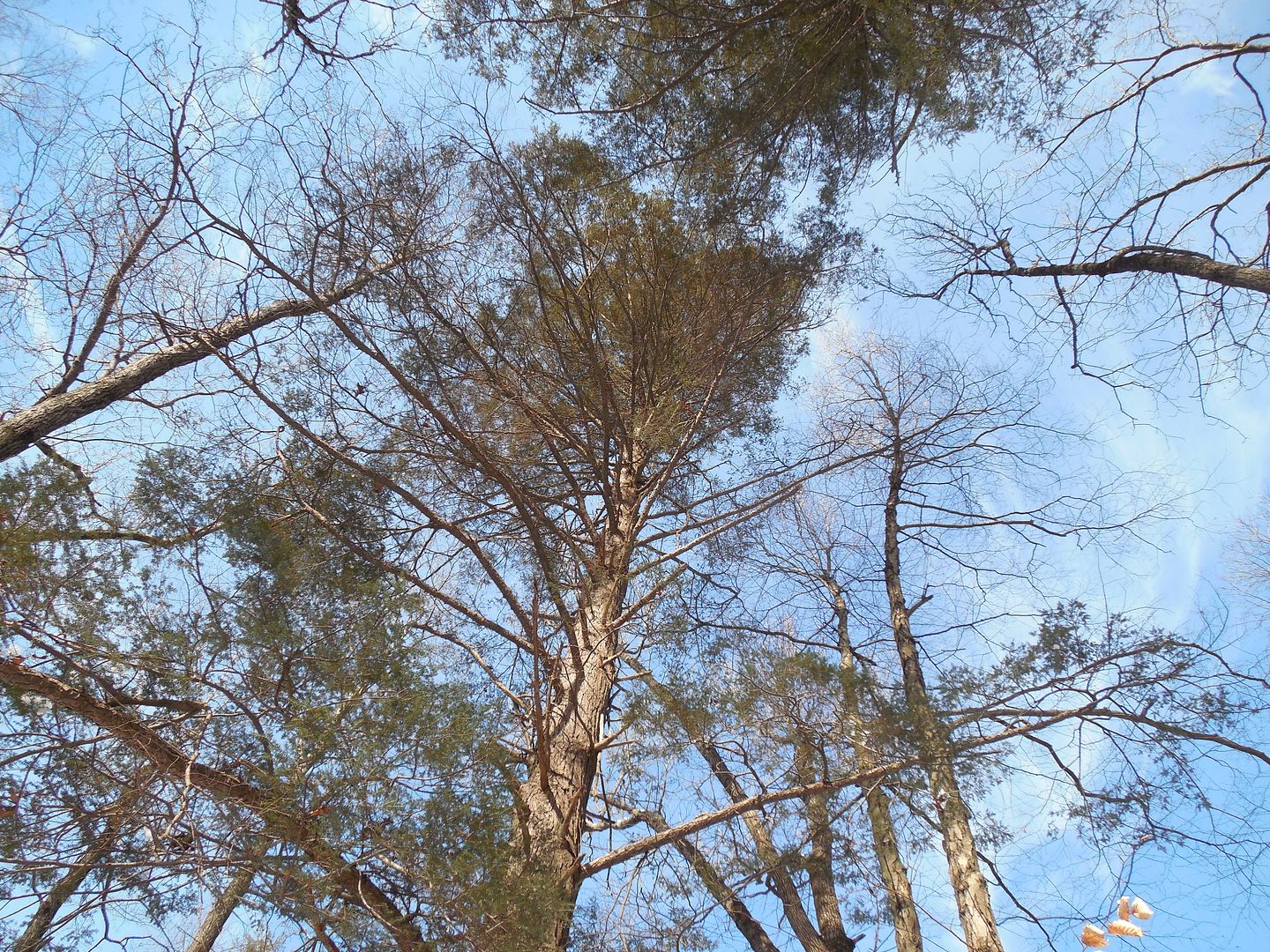
I was bone dry on the hike out thanks to the fire. Sure beats being cold and wet. That's about it for this outing. I have a video so check it out if yea have the time. Thanks for looking.
[video=youtube;np-M3oIP8eA]https://www.youtube.com/watch?v=np-M3oIP8eA[/video]

Once again the micro spikes carried me though. One of the best winter gear items I own. Almost super natural traction which actually takes a bit of getting used to. You'll swear you're going to slip and then it doesn't happen.

Bushwhacking sometimes means crawling under stuff. I like to clear the slush and snow off such obstacles. Snow sliding down one's neck just adds to the overall moisture content of clothing. Getting wet is my enemy during cold weather. Everything is ok when moving (up to a point) but then the world goes down hill fast once activity levels drop.

Normally if using a heated shelter my priorities are wood and water as it's harder to deal with both issues in the dark but here I really wanted to pitch the canopy first.



The goal was to stay dry but it wasn't long before that hope faded. My hands were really starting to feeling it. Kinda amazing how the wet and cold can suck the life right out of a person. Subzero F without wind is an easier game IMHO.

Took my gear out of the pack deciding on what to do next.

A fire would really really be nice but finding dry wood in slush is never easy. Well it's never easy for me anyways. My preference is standing deadwood without the bark. Having bark might make one think the underlying wood should be drier but in my AO most bark seems to trap more moisture than repel. I can't always find exactly what I am looking for but do my best.

These conditions demand a split wood fire. All the twigs were a frozen slushy mess. The bark on the wood was soaked. I couldn't find enough really good wood. A twig fire might work but if it doesn't I would need to crawl into my bag defeated then hike out with wet cloths. Man would that suck. The plan was to split the wood into progressively smaller pieces. The finer shavings would work in place of pencil lead thick twigs to catch the flame. The thicker would expand that fire and thicker still hold it. Lots of people use this method as it's proven successful in harsh conditions. The down sides are time and effort.
Slushy wood inside my tent. Working in the tent was nice to keep the split wood, myself and gear from getting wetter during the processing but the limitation of space hampers everything.

Off to a good start. Will make the smallest splittings and shavings just before the. Less chance of me dumping those into the snow.

Around dusk the moisture level seemed to jump up from 95% to 99.99% LOL. The cameras fogged over. Nearly done with the split wood. Once the stove has an established coal bed it will burn the regular damper wood. Still split wood always burns better. I kept the split wood and cuttings off the ground resting on longer sticks. It was nearly impossible to keep them totally off the ground during processing but I can only do so much.

Lastly the shavings.

Ready to GO!

FIRE!


The heat took the edge right off.

Doesn't look like much but this split wood combined with drying sticks burned all night with fuel leftover.

The sides, back and under the stove are great places to help dry firewood. I tend to avoid drying wood near the front.


Sausage and cauliflower.

Sausage bacon. What? You heard that right!

One of the cool or rather hot things about a heated shelter is the way the moisture raises off clothing and wood once the stove is running.

Things are going well.

Mistakenly took my 6-man two-piece pipe setup. Too long for the 4-man tent but worked great.

I was warm and dry but importantly so were my clothes which were hanging on the clothesline.

Time to get up. I have to get out to prep for the so callerd blizard of the century which never really came. Got only 10 inches of snow for that storm. Oh well.

Morning tipi. Stove started to sink into the ground off to the side as the earth melted.

Primary downsides of the hot tent are setup and take down times. There is the stove to deal with.

Then all those pegs.

My kit.

Stand out gear beyond the obvious heated tipi system:
1. Kahtoola microspikes. Maybe I am getting old but not falling really works for me.
2. Exped downmat 7XS and XL Ridgerest pads. Insulation from the ground and comfort makes all the difference.
3. Jeff White knife and felco folding saw. Tools for the split wood fire.
4. Nalgene Oasis canteen.
5. Fenix HL30 headlamp.
Always liked snow on river rocks.

Taking a break under this big Hemlock.


I was bone dry on the hike out thanks to the fire. Sure beats being cold and wet. That's about it for this outing. I have a video so check it out if yea have the time. Thanks for looking.
[video=youtube;np-M3oIP8eA]https://www.youtube.com/watch?v=np-M3oIP8eA[/video]

